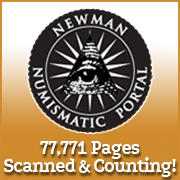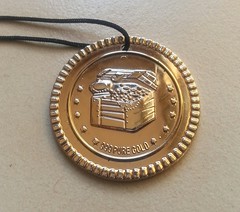
About UsThe Numismatic Bibliomania Society is a non-profit organization devoted to the study and enjoyment of numismatic literature. For more information please see our web site at coinbooks.org SubscriptionsThose wishing to become new E-Sylum subscribers (or wishing to Unsubscribe) can go to the following web page link MembershipThere is a membership application available on the web site Membership Application To join, print the application and return it with your check to the address printed on the application. Membership is only $20 to addresses in the U.S., $25 for First Class mail, and $30 elsewhere. For those without web access, write to: Terry White, Treasurer
AsylumFor Asylum mailing address changes and other membership questions, contact Terry at this email address: terrywhite5475@yahoo.com SubmissionsTo submit items for publication in The E-Sylum, just Reply to this message, or write to the Editor at this address: whomren@gmail.com BUY THE BOOK BEFORE THE COIN |
- WAYNE'S WORDS: THE E-SYLUM NOVEMBER 15, 2015
- KOLBE & FANNING SALE 140 PRICES REALIZED AVAILABLE
- NEWMAN PORTAL COMPLETES N.O.W. NEWS DIGITIZATION
- NEW BOOK: AMERICAN GOLD AND SILVER
- NEW BOOK: GREEK COINS
- BOOK REVIEW: THE VALUE OF MONEY
- BOOK REVIEW: GUIDE BOOK OF CANADIAN COINS AND TOKENS
- TOM CULHANE (1957-2015)
- NOTES FROM E-SYLUM READERS: NOVEMBER 15, 2015
- READER COMMENTS ON WALTER BREEN
- ENGRAVED CONFEDERATE TREASURY SOUVENIR COINS
- ART AND ARTISTS ON THE MONUMENTS MEN MEDAL
- WILLIAM BENTLEY (1759-1819)
- BOB VLACK, A PERSONAL REMEMBRANCE
- SLEUTHING OBSOLETE CURRENCY SECRETS
- REBUS PUZZLE: AMERICAN SHOE COMPANY
- REBUS PUZZLE ON 1848 MEDAL
- HANDLING AND PRESERVING PLASTER COIN MODELS
- QUERY: PHILADELPHIA MINT SOUVENIR VISIT MEDALS
- THE ROYAL MINT'S 2016 COIN DESIGNS
- NUMISMATIC REMEMBRANCES OF GUY FAWKES
- WAYNE'S NUMISMATIC DIARY: NOVEMBER 15, 2015
- VIDEO: HOW BOOKS ARE PRINTED AND BOUND
- CHINA'S NEW 100-YUAN BANKNOTE
- BUYERS COMPLAIN ABOUT "PURE GOLD" BANKNOTES
- SELECTIONS FROM BALDWIN'S: NOVEMBER 15, 2015
- AUSTRIA'S 2016 NEW YEAR'S COIN
- NUIE'S NEW VESUVIUS VOLCANO 'COIN'
- WARTIME LOVE TOKEN INTERVIEW WITH CAROL BASTABLE
- TREASURE HUNTER SEEKS SUNKEN BRITISH SHIP OFF URUGUAY
- FEATURED WEB SITE: WORLD COIN COLLECTION
Click here to access the complete archive
To comment or submit articles, reply to whomren@gmail.com
WAYNE'S WORDS: THE E-SYLUM NOVEMBER 15, 2015

Sometimes readers report not receiving their E-Sylum issue by email. If that happens to you, please check with me to confirm your address is on our mailing list. Next, check your spam folders to see if it’s ending up there. Last week's Breen article gave spam filters conniptions, so that could be what happened this time. Also, some Comcast subscribers have reported having problems (again) over the past couple of weeks.
If you are on our list and just not seeing your issues at all, it could be that your Internet Service provider (ISP) is blocking it for some reason. If your email address ends in "Comcast.net", then your ISP is Comcast. Contact your ISP's help desk about the problem, and ask them to "whitelist" the following: esylum@binhost.com, our server (lists.capalon.com) and my email address homren@gmail.com. If the representative says they don't know what a "whitelist" is, they're an idiot. Call back and talk to someone else.
New subscribers this week include: Jennifer Jones of the Division of Numismatics at the Smithsonian Institution, courtesy of Peter Huntoon. Welcome aboard! We now have 1,893 subscribers.
This week we open with updates on Kolbe & Fanning's recent numismatic literature sale and the Newman Numismatic Portal, followed by two new books and two reviews. Other topics include Walter Breen, Bob Vlack, Tom Culhane and Salem, Massachusetts numismatist Rev. William Bentley.
To learn more about Philadelphia Mint souvenir visit medals, the Great Fire of London coin, Guy Fawkes, the Elusive Spondulix, MENSA, an 1848 rebus medal, preserving plaster coin models, Thames tunnel medals, sesquipedalian curiosity and how paper money can be attributed to a certain collection via traces of confectionary sugar, read on. Have a great week, everyone!
Wayne Homren
Editor, The E-Sylum
KOLBE & FANNING SALE 140 PRICES REALIZED AVAILABLE
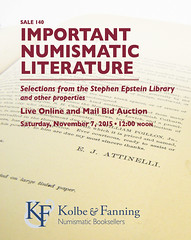 Lot 15: Beaupré’s rare work on the medallist Ferdinand de Saint-Urbain
Lot 15: Beaupré’s rare work on the medallist Ferdinand de Saint-Urbain
Beaupré, M. CATALOGUE DESCRIPTIF DES OUVRAGES DE FERDINAND DE SAINT-URBAIN. Nancy: Lucien Wiener, 1867. 8vo, contemporary tan half calf,
gilt, with marbled sides; spine with five raised bands, ruled, lettered and decorated in gilt; marbled endpapers. Realized: $300
Lot 70: Friedensburg’s rare three-volume publication on medieval Silesian coins
Friedensburg, F. SCHLESIENS MÜNZGESCHICHTE IM MITTELALTER. THEIL I: URKUNDENBUCH UND MÜNZTAFELN. THEIL II: MÜNZGESCHICHTE UND
MÜNZBESCHREIBUNG. (THEIL III): ERGÄNZUNGSBAND. Breslau: Josef Max & Comp., 1887, 1888; E. Wohlfarth, 1904. Three volumes, complete.
Realized: $400
Lot 142: Medina on European medals relating to the Americas
Medina, J.T. MEDALLAS EUROPEAS RELATIVAS A AMÉRICA . Buenos Aires, 1924. Small 4to [27 by 19 cm], contemporary black quarter morocco with
mottled boards; spine with five raised bands, ruled and lettered in gilt. xv, (1), 377, (7) pages; halftone illustrations of medals
throughout the text. Realized: $375
Lot 157: Niggl’s First Volume on Musical Medals
Niggl, Paul. MUSI KER MEDAILLEN . HOFHEIM AM TAUNUS, 1965. 4to, original tan linen lettered in red. 268, (2) pages; illustrated.
Realized: $170
Lot 158: Niggl’s Second Volume on Musical Medals
Niggl, Paul. MUSI KER MEDAILLEN II. HOFHEIM AM TAUNUS, 1987. 4to, original tan linen lettered in red. 196 pages; illustrated. Realized:
$350
Lot 174: Rodolfo Ratto’s 1928 Sale
Ratto, Rodolfo. COLLECTION EDWARD A. SYDENHAM ESQ. M.A. DE OXFORD ET D’UN AUTRE AMATEUR. AES GRAVE ITA-LIQUE, MONNAIES ROMAINES
CONSULAIRES. Lugano, 7 février 1928. 4to, original printed card covers. (4), 33, (3) pages; 29 fine plates of coins Realized:
$500
Lot 273: An original copy of Attinelli’s Numisgraphics
Attinelli, E.J. NUMISGRAPHICS, OR A LIST OF CATALOGUES, IN WHICH OCCUR COINS OR MEDALS, WHICH HAVE BEEN SOLD BY AUCTION IN THE UNITED
STATES, ALSO, A LIST OF CATALOGUES OR PRICE LISTS OF COINS, ISSUED BY DEALERS, ALSO, A LIST OF VARIOUS PUBLICATIONS OF MORE OR LESS
INTEREST TO NUMISMATOLOGISTS, WHICH HAVE BEEN PUBLISHED IN THE UNITED STATES. New York, 1876. 8vo [26 by 16.5 cm], handsomely bound in
mottled blue half calf with gray paper sides by Alan Grace; spine with two raised bands ruled, lettered and decorated in gilt; housed in a
dark gray cloth slipcase; original printed front wrapper mounted and bound in. 123, (1) pages; folding frontispiece facsimile of the 1828
Watkins broadside. Realized: $2750
Lot 314: Curtis Numismatic Lottery Scheme
Curtis, John K. TO NUMISMATISTS IN PARTICULAR! AND TO EVERYBODY IN GENERAL! THE GREATEST CHANCE EVER OFFERED TO OBTAIN RARE AND VALUABLE
COINS AND MEDALS, AT THE VERY LOW SUM OF ONE DOLLAR EACH. New York: James Huggins, Printer, (1861). Handbill [23.5. by 15 cm], printed on
one side. Just a trifle foxed. Mounted on black board and framed. Near fine. Realized $300.
Lot 339: The First Cincinnati Coin Auction
Hubbard, S.G. [auctioneer]. GREAT SALE OF OLD COINS, TOKENS AND COIN CASE, AT AUCTION! (Cincinnati), March 18, (1863). Broadside [78.5 by
63 cm / 31 by 24 inches], professionally framed [frame dimensions are 88.5 by 70.5 cm / 35 by 28 inches]. 682 lots. Realized
$1900.
Lot 362: 1863 Leeds & Co. Broadside
Leeds & Co., Henry H. CATALOGUE OF RARE COINS, MEDALS AND TOKENS. (New York), December 24, 1863. Broadside [46 by 18.5 cm]. Lots 101–217.
Several folds. Realized: $300
Lot 416: A 21-volume hardcover set of John J. Ford, Jr. coin sales
Stack’s. public auction sales. JOHN J. FORD , JR. COLLECTION . COINS , MEDALS AND CURRENCY . PARTS I–XXI. NUMISMATIC AMERICAN HISTORY. New
York etc., 2003–07. Twenty-one catalogues. 4to, original maroon cloth, gilt; upper covers embossed; decorative endpapers. 5464 pages;
10,885 lots; numerous portraits; profusely illustrated throughout, largely in full color. Realized: $1600
To read the complete prices realized, see:
www.numislit.com/pdfs/140PRL.pdf
To read the earlier E-Sylum articles, see:
KOLBE & FANNING’S SALE 140 CLOSES NOVEMBER 7, 2015
(www.coinbooks.org/esylum_v18n40a04.html)
SELECTIONS FROM KOLBE & FANNING SALE 140
(www.coinbooks.org/esylum_v18n44a20.html)
NEWMAN PORTAL COMPLETES N.O.W. NEWS DIGITIZATION
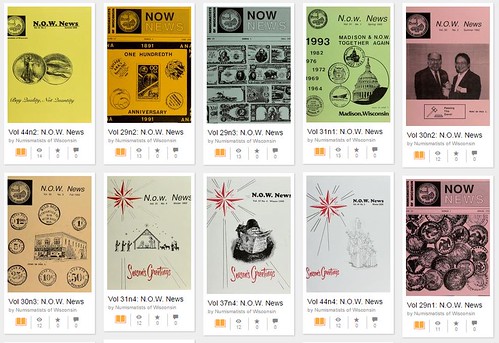
The Newman Numismatic Portal (NNP) has completed scanning of a 50-year run of the &npsp; N.O.W. News, the quarterly publication of the Numismatists of Wisconsin. Representing nearly 6000 pages, the entire run was scanned by NNP between Nov. 3 and Nov. 10 and is available on Internet Archive at https://archive.org/details/newmannumismatic?&and[]=N.O.W.%20News.
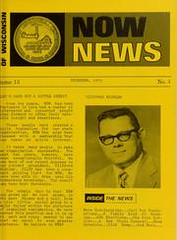 NNP wishes to thank Jeff Reichenberger, N.O.W. News Editor, for furnishing the back issues and securing permission from the Numismatists of
Wisconsin board. The Numismatists of Wisconsin are a vibrant state organization with any number of numismatic celebrities identified in the earliest
issues – Ken Bressett, Chet Krause, and Neil Shafer among others. Illustrated here is then-president Cliff Mishler, from the December 1975 edition.
Other organizations wishing to have their publications or archives scanned should contact NNP Project Coordinator Len Augsburger at
leonard.augsburger@wustl.edu.
NNP wishes to thank Jeff Reichenberger, N.O.W. News Editor, for furnishing the back issues and securing permission from the Numismatists of
Wisconsin board. The Numismatists of Wisconsin are a vibrant state organization with any number of numismatic celebrities identified in the earliest
issues – Ken Bressett, Chet Krause, and Neil Shafer among others. Illustrated here is then-president Cliff Mishler, from the December 1975 edition.
Other organizations wishing to have their publications or archives scanned should contact NNP Project Coordinator Len Augsburger at
leonard.augsburger@wustl.edu.
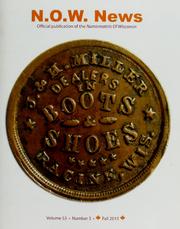
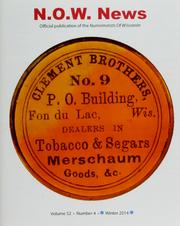
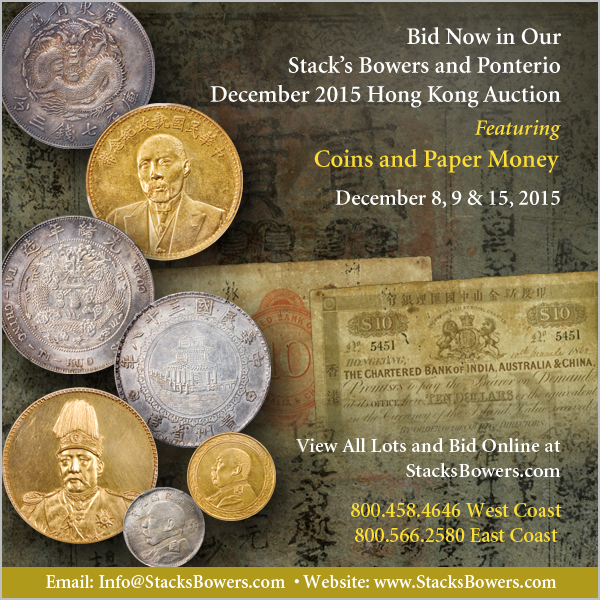
NEW BOOK: AMERICAN GOLD AND SILVER
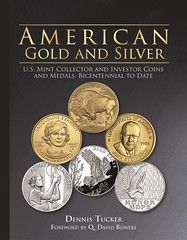 Whitman Publishing announces the upcoming release of American Gold and Silver: U.S. Mint Collector and Investor Coins and Medals,
Bicentennial to Date, by Dennis Tucker. The 384-page hardcover book will be available December 15, 2015, from booksellers and hobby shops
nationwide, and online, for $29.95. It can also be borrowed for free as a benefit of membership in the American Numismatic Association, through the
Dwight N. Manley Numismatic Library.
Whitman Publishing announces the upcoming release of American Gold and Silver: U.S. Mint Collector and Investor Coins and Medals,
Bicentennial to Date, by Dennis Tucker. The 384-page hardcover book will be available December 15, 2015, from booksellers and hobby shops
nationwide, and online, for $29.95. It can also be borrowed for free as a benefit of membership in the American Numismatic Association, through the
Dwight N. Manley Numismatic Library.
“Every coin collector knows about the United States Mint’s American Eagle bullion coins,” says award-winning author Dennis Tucker. “But did you know that the Mint has produced more than 150 other collectible works of silver and gold since the national Bicentennial in 1976?” These include some of the most beautiful coins and medals ever engraved for the United States. Some were runaway best-sellers and made national headlines. Others are well-kept secrets. Many are sought by collectors and investors around the globe. Some are “sleepers”—underappreciated treasures with great potential waiting to be discovered.
Tucker shares years of research and unique perspective in a colorful exploration of these amazing pieces of Americana. He takes you into the engraving department of the U.S. Mint, behind the scenes at the U.S. Treasury, into the chambers of Congress, even to the White House, where questions about the nation’s precious metals have been argued for generations.
Inside you’ll find a richly illustrated history of silver and gold in the coinage of colonial America and the United States. You’ll see why silver and gold were difficult for the average American to acquire through most of our history. Learn about the American Arts gold medallion program of the early 1980s, and the U.S. Mint’s recent American Buffalo, First Spouse, and America the Beautiful bullion programs. Dozens of other important modern productions all are cataloged and described inside: Bicentennial gold and silver medals, the 2014 gold Kennedy half dollar, 1916–2016 centennial gold coins, silver Wildlife Refuge Service medals, the 9/11 national medal, the Franklin Firefighter medal, Young Astronauts medals, and many more.
Along the way Tucker shines light on a thousand people, places, and points in American history: military heroes and famous artists, awe-inspiring landmarks, fearless innovators, dreamers and doers. He presents market histories and gives valuable advice on collecting and investing.
Q. David Bowers calls American Gold and Silver “exciting, informative, and in the annals of numismatic research unique,” and says, “This book will serve permanently as the source for facts on the U.S. Mint’s modern gold and silver coins and medals.”
# # #
American Gold and Silver: U.S. Mint Collector and Investor Coins and Medals, Bicentennial to Date
By Dennis Tucker; foreword by Q. David Bowers.
ISBN 079484237-2
Hardcover, 8.5 x 11 inches, 384 pages, full color. Retail $29.95 U.S.
For more information, or to order, see:
American Gold and Silver: U.S. Mint Collector and Investor Coins and Medals, Bicentennial to Date
(www.whitman.com/store/Inventory/Detail/American-Gold
-and-Silver-U-S--Mint-Collector-and-
Investor-Coins-and-Medals-Bicentennial-to-Date+0794842372)
NEW BOOK: GREEK COINS
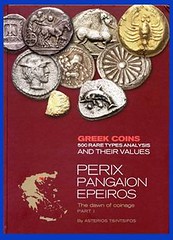 This week we present the just published first volume of an ambitious book by Asterios Tsintsifos. Two more volumes will soon follow.
This week we present the just published first volume of an ambitious book by Asterios Tsintsifos. Two more volumes will soon follow.
Presents coins of the ancient cities of Macedonia, around the mountain Pangaion: Akesamnai, Lete, Alectriopolis, Antisara, Neapolis, Skarte, Hyle, Topeiros, Avlonas, Oisyme, Galepsos, Pergamos, Methone, Orreskeia, Olynthos, Ennea Hodoi, Argilos, Berga, Phagre, Tragilos, Brea, and many others including Thasos island.
The author has a long experience in coin auctions, so each coin description is accompanied by an estimation of its value: three prices are given according to the condition: good, fine, extra fine. In english. Hard cover, 30 cm, 268 pp., ill.: coins, maps; net weight 1080 gr.
List price: EUR 220.00 / -33% discount. Your price: EUR 147.40 + Shipping cost depending on destination.
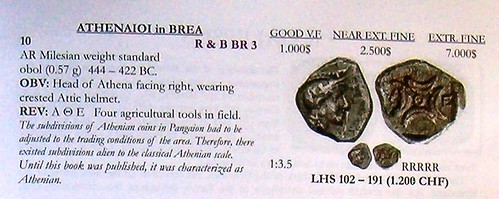
For more information, or to order, see:
http://booksoncoins.blogspot.gr/

BOOK REVIEW: THE VALUE OF MONEY
The Smithsonian has published a book to accompany the new exhibit, "The Value of Money" at the National Museum of American History. I wrote the following short review on Amazon:
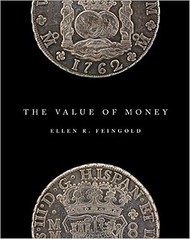 This slim volume is the companion to the new permanent money exhibit at the Smithsonian's National Museum of American History. With
approximately one and a half million objects, the national numismatic collection is a vast treasure trove that belongs to the American people, but
only a small selection of the most celebrated, representative, exotic or dramatic items are accessible on public display.
This slim volume is the companion to the new permanent money exhibit at the Smithsonian's National Museum of American History. With
approximately one and a half million objects, the national numismatic collection is a vast treasure trove that belongs to the American people, but
only a small selection of the most celebrated, representative, exotic or dramatic items are accessible on public display.
The book is organized in five thematic sections: Origins of Money, Innovations of Money, Messages of Money, Artistry of Money and Allure of Money. The author is the new curator of the collection and she has brought fresh enthusiasm, meticulous scholarship, and a new openness to an institution that has a reputation for stodginess.
While this book will be of value to collectors and professional numismatists it also has much to offer readers with an interest in social, cultural and economic history. Richly illustrated in color, and well-indexed, with a brief but useful bibliography.
The Value of Money celebrates the power of using monetary objects to explore history. This richly illustrated book features over 175 objects from the Smithsonian National Museum of American History’s National Numismatic Collection. With objects from every inhabited continent, spanning more than 2,600 years, this book showcases the National Numismatic Collection’s unique strengths, including the geographic and chronological diversity of the collection and the stunning rarities it contains. The companion volume to a major exhibition of the same name, this book examines the origins of money, new monetary technologies, the political and cultural messages money conveys, numismatic art and design, and the practice of collecting money. The Value of Money connects American history to global histories of exchange, cultural interaction and expression, political change, and innovation.
Author: Ellen R. Feingold
Hardcover: 172 pages
Publisher: Smithsonian Institution Scholarly Press (October 13, 2015)
Language: English
ISBN-10: 193562380X
ISBN-13: 978-1935623809
Product Dimensions: 8.4 x 0.6 x 10.3 inches
For more information, or to purchase on Amazon, see:
The Value of Money
(www.amazon.com/The-Value-Money-Ellen-Feingold/dp/193562380X)
BOOK REVIEW: GUIDE BOOK OF CANADIAN COINS AND TOKENS
 A Guide Book of Canadian Coins and Tokens is destined to become the new "Red Book" for collecting Canadian coins. This
first edition is written by professional numismatist and accomplished author James A. Haxby and is published by Whitman Publishing, LLC. This 464
page guide covers every aspect of Canadian coinage from provincial coins and tokens issued in colonial days through today's modern issues.
A Guide Book of Canadian Coins and Tokens is destined to become the new "Red Book" for collecting Canadian coins. This
first edition is written by professional numismatist and accomplished author James A. Haxby and is published by Whitman Publishing, LLC. This 464
page guide covers every aspect of Canadian coinage from provincial coins and tokens issued in colonial days through today's modern issues.
The book uses premium stock paper and full-color high-quality pictures throughout. It's hardcover and compact design (6 by 9 inches) makes it portable so you can take it with you to your favorite coin dealer or coin show.
Although it is a hardcover book, its distinctive construction allows it to lie flat and stay open while you are reading it.
Additionally, it's depth of information and detailed data makes it the new de-facto-standard reference book for Canadian coins. The only flaw that I see with this book is that it is difficult to recognize when one chapter ends and another one begins. Major groups of chapters are indicated by different color banners across the top of each page.
A Guide for Beginners If you have never collected Canadian coins (or any other type of coin) this book will help you get started. The book starts with instructions on how to properly use this guide and a table of abbreviations used throughout the book.
The beginner will be interested in reading the section on grading and pricing. This is followed by an extremely thorough research on the use of money in early Canada that goes back to the 1500s.
The minting process and manufacturing facilities are also covered in the early sections of the book. A detailed section on grading Canadian coins begins with the standard ANA grading definitions that are followed by a detailed discussion on coin grading by Monarch portrait.
Advanced Guide for Seasoned Collectors
For the intermediate to advanced collector of Canadian coins, there is a detailed section on colonial and provincial coinage.
Each section contains comprehensive information and the history behind each issue. This includes private tokens as well as government issued coins.
The major thrust of the book begins when the Dominion of Canada was formed in 1867. Each issue is covered in extreme detail with full-color pictures and descriptions of each coin and many varieties. Additionally, detailed specifications and individual grading descriptions are included.
Finally, test tokens, sets and bullion coins, including the 2007 $1 million gold Maple leaf 100 kg bullion coin are covered. The appendices encompass a variety of topics including toning, third party grading and authentication, misstrikes/errors, Canadian coin collecting organizations, bullion value charts and an auction price history.
To read the complete article, see:
Book Review: A
Guide Book of Canadian Coins and Tokens
(http://coins.about.com/od/Coin-Books-And-Publications/fr/Book-Review-A-Guide-Book-Of-Canadian-Coins-And-Tokens.htm)
THE BOOK BAZARRE
TOM CULHANE (1957-2015)
New Jersey coin dealer Tom Culhane died on October 29, 2015, at age 58. His whimsical business name was The Elusive Spondulix. So, what is a spondulix?
Tom attempted to explain on his website:
“The company name, The Elusive Spondulix, may have raised your sesquipedalian curiosity. No don’t run for your Funk & Wagner, let me elucidate. Obviously, Elusive means hard to find or locate; Spondulix, the word people always question me about at coin shows, is neither Latin nor Greek. I can’t speak any language other than English. Spondulix is a word which entered the English language from American slang of the 1800s. During this time African and West Indies Cowry-Shell money, made of gold, was on display at the Philadelphia Mint. Referred to as Spondu, the slang, Spondulix, eventually entered the English language as another word for coin or money. The word has also been spelled ending both with Lics and Licks, but the Lix ending is the more generally accepted spelling.
There is another explanation. In the W. C. Fields’ movie My Little Chickadee (1940), Fields as gambler and con man Cuthbert J. Twillie says to his partner, “Have you any of the elusive spondulixs on you?” Culhane admitted this was the inspiration for the company name.
Spondulix is one of many slang terms for money. It generally refers to some quantity of money and not just a single coin. Other such terms include bread, cabbage, dough, lucre, moola or scratch.
The slang term comes from Spondylus shells that were used as a form of coinage dating back about 5,000 years. They were harvested from the Aegean Sea and formed into bracelets and ornaments. Their name in Greek is Spondulox.
Thomas S. Culhane was born on July 12, 1957, in Hoboken, New Jersey. He was a graduate of St. Peters College in Jersey City, New Jersey. He worked as a full-time coin dealer with various firms after 1979. His firm, The Elusive Spondulix, located in Union, New Jersey, was founded in 1986.
Culhane was an accomplished coin grader. He worked as a grading consultant for Numismatic Guaranty Corporation (NGC) and Professional Coin Grading Service (PCGS). He was also hired by Stack’s to do grading for auction lots.
His knowledge was recognized outside the profession. When the TV quiz show Jeopardy wanted to verify the answer for contestants’ questions, they sometimes called Culhane.
He was a contributor to the Guidebook of United States Coins (Red Book). Later he contributed articles for the introduction to the Official Blackbook Price Guide to U. S. Coins after 1997.
One of his specialties was Philippines coinage. He revised the book U. S. Philippine Coins, originally written by Lyman Allen, for the 6th edition. Another of his specialties was Irish coins and tokens.
To read the complete article, see:
What Is a Spondulix? In Memoriam: Tom Culhane
(www.coinweek.com/expert-columns/spondulix-memoriam-tom-culhane/)
To read the earlier E-Sylum articles, see:
VOCABULARY WORD: SPONDULIX (www.coinbooks.org/esylum_v08n25a13.html)
THE ELUSIVE SPONDULIX (www.coinbooks.org/esylum_v08n26a18.html)
NOTES FROM E-SYLUM READERS: DECEMBER 8, 2013 : More on the U.S. / Philippine Coins
book (www.coinbooks.org/esylum_v16n50a07.html)
NOTES FROM E-SYLUM READERS: NOVEMBER 15, 2015
Query: Bowers and Merena Bust Dollar Sale Info Sought
Michael Sullivan writes:
I have a wonderful example of the 1803 Bust Dollar, Small 3, B-3, BB-256, PCGS AU-50. On the back of the slab is an old sticker "197071 Bowers and Merena." Do any of our E-Sylum readers know with which sale this lot corresponds?
Lunch with Jorge Proctor
Ray Williams writes:
I had the most fun lunch hour that lasted 5 hours Thursday. While on vacation in Ft. Lauderdale, I had arranged to meet Jorge Proctor. He is an author and researcher for the area of Spanish American coinage. When I write an article that has any Spanish content, I run it by him to make sure I don't put anything incorrect in print.
I learned so much about Spanish American coinage, the assayers, mint officials, shipwrecks, numismatic literature and much more. He also brought some wonderful things for me to see.
To read earlier E-Sylum articles, see:
JORGE PROCTOR'S COLONIAL PANAMA MINT BOOK WINS AWARD
(www.coinbooks.org/esylum_v09n08a05.html)
BOOK REVIEW: HISTORIA DE LA CASA DE MONEDA DE GUATEMALA 1731-1776
(www.coinbooks.org/esylum_v13n20a08.html)
Kosoff's Adams-Woodin Pattern Book
In last week's diary I mentioned a conversation with John Dannreuther about a copy of the Adams-Woodin pattern book with blue and red
check marks made by Abe Kosoff. John adds:
When I bought it in the Jack Collins sale (1980, I believe), I thought it represented the patterns sold to King Farouk. In a way, it was, as a lot of F.C.C. Boyd's patterns did end up with the king.
The Kosoff A-W book had red check marks to represent patterns going from William Woodin to Col. Green to Boyd. The blue check marks are Newcomer to Boyd. (Wayte Raymond sold many of Newcomer's patterns, while B. Max Mehl handled the gold and other issues.)
The Boyd coins were sold in the 1940's World's Greatest Collection sales, but the patterns were a fixed price list.
I have never sat down with the Farouk catalog and tried to figure out which ones, but Boyd had a fabulous pattern collection, of course, so likely many King Farouk coins are from his collection. In the Bowers book on Abe Kosoff, there is a story of how the Indian Head twenty (formerly J1776) was sold to Farouk. Kosoff claimed that Boyd's wife actually owned the coin!
To read the earlier E-Sylum article, see:
WAYNE’S NUMISMATIC DIARY: NOVEMBER 8, 2015 : Whitman Baltimore Winter Expo
(www.coinbooks.org/esylum_v18n45a20.html)
Richmond Coin Dealers Jerry Schmidt and Bill Wilkerson
Dave Schenkman writes:
I enjoyed reading the bit about Jerry Schmidt. I’ve known him since his early shop days in downtown Richmond. I used to make frequent buying trips to Richmond, since not only to see Jerry but also Bill Wilkerson, whose shop I had been going to since the early 1960s, both of them gentlemen of the old tradition (Jerry still is; Bill is no longer living). I’ve purchased lots of good coins and tokens in Richmond over the years.
To read the earlier E-Sylum article, see:
ARTICLE FEATURES RICHMOND DEALER JERRY SCHMIDT
(www.coinbooks.org/esylum_v18n45a15.html)
Bruce Perdue's Trick or Treat Coins
Regarding John Nebel's Halloween coin choice, Central States Numismatic Society President Bruce Perdue writes:
I passed out 25 baggies with wheat cents, elongates from CSNS and woods as well to the first 25 kids old enough to appreciate them. Being generous this year I threw in candy as well and after the 25 were gone I passed out candy to the rest. Next year I will have a large stock of elongates and woods from CSNS and the Illinois Numismatic Association (ILNA).
To read the earlier E-Sylum article, see:
TRICK OR TREAT: COIN OR CANDY? (www.coinbooks.org/esylum_v18n45a32.html)
Poland Begins Nazi 'Gold Train' Search
A fresh search for a Nazi 'gold train', believed to have been buried in the dying days of the Third Reich, is set to begin in Poland.
Excavators are due to study a railway embankment in Walbrzych in a bid to solve one of the biggest mysteries of the Second World War.
Some historians believe three trains with arms, art, gold and archives vanished in a 18sq-mile area near the current Czech border as the Red Army advanced in 1945.
To read the complete article, see:
Fresh search for Nazi 'gold
train' set to begin: Excavators to study railway embankment as they try to solve one of the biggest mysteries of the Second World
War (www.dailymail.co.uk/news/article-3309965/Fresh-search-Nazi-gold-train-set-begin.html)
To read the earlier E-Sylum articles, see:
HAS LEGENDARY NAZI GHOST TRAIN BEEN FOUND?
(www.coinbooks.org/esylum_v18n34a26.html)
RADAR USED IN NAZI GHOST TRAIN HUNT
(www.coinbooks.org/esylum_v18n35a35.html)
READER COMMENTS ON WALTER BREEN
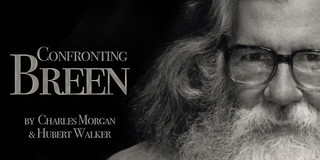
The Breen article was difficult to read, but something that was worth writing. I am certainly conflicted, as I knew Walter from a very young age, and considered him a good friend and a mentor. Indeed, he was one of the first people to take a kid interested in colonials seriously, and he willingly shared his time and knowledge.
Numismatics, especially the general American flavor, wouldn't be anything remotely like what it is today without two modern giants who did more to popularize it and make it the King of Hobbies instead of the Hobby of Kings -- those two were Walter Breen and Q. David Bowers (one could go back 30 years before these two and add B. Max Mehl, of course).
A lot of people made a lot of money off of Walter Breen which can certainly explain why he was welcomed in the hobby and why the whispers never affected his position within numismatics. Perhaps the hobby was blind, perhaps it simply did not want to believe, perhaps it was just something too embarrassing to discuss, so it was the elephant in the room that no one wanted to discuss.
There's also the problem of gender imbalance in the hobby, which is nothing new -- but note that it was always the mother of a YN or a woman member of the club who jumped up to warn other mothers. With so few women active in numismatics, then and now, that may have meant far fewer people serving as warning beacons.
Walter was a complex man, and it wasn't simply a matter of separating his coin life from his personal life (though really most of us do have that separation). With Walter it was separating his coin life from his lives in science fiction, higher mathematics, baroque music, astrology, humor, gay studies, women's rights and another dozen or so areas that he was an expert in AND published in (though often under different pen names)...and each of those lives had separations between the public Walter in them and the private Walter that far fewer people actually knew.
One can never justify (or even understand) taking advantage of a child, and that will continue to be linked to Walter's name and memory for however long he is remembered. But I'm not certain that a weakness or sickness in his own life negates what he did for numismatics as a whole. History is full of people who had major character flaws and problems but went on to do great things (and possibly they did those great things BECAUSE of their flaws).
Many of Walter's theories and logical jumps from A to E without ever stopping at B, C or D have already been disproven, and many of the things he accepted as fact have proven to be not as stable as once thought, but other things that he wrote have held up remarkably well; one doesn't discard those good works because the author did bad things.
Numismatics, I suspect, will continue to grapple with the legacy that Walter left long after those of us who actually knew him are gone; maybe at that remove in time someone will be able to give a more balanced assessment of the man and his work.
I fail to see what useful purpose is served by Morgan, Walker and CoinWeek in publishing a cheap shot at a man who has been dead for over 20 years. Dressed up with footnotes and all, but a cheap shot nonetheless. If they’re trying to taint his reputation, I don’t think it is possible to besmirch it any farther than his conviction and imprisonment did.
Are they trying to encourage numismatists of today not to let their colleagues prey on the children of today? If so, it’s a great idea, but that doesn’t come through in the post.
Are they trying to make guilty by association those who didn’t turn him in back in the day? I wasn’t there, but it is my understanding from several of the old-timers that they DID keep him away from children. Or, rather, keep the children away from him. On the other hand, if he was first found guilty of pederasty in 1954, it is the government that failed later children. That kind of failure is why we now have a registry of sex offenders. Had it existed back in the day, he would certainly have been on it.
Are they trying to say that his “sins” (to quote John Wright) permanently taint his numismatic research? Yes, they do say that, but it’s absurd. The two are completely separable. Breen’s numismatic reputation is certainly imperfect but has no need for rehabilitation. We’re gradually figuring out where he was right from where he was wrong. That’s how research works. But it has nothing to do with what he did outside of numismatics.
Breen is probably the best numismatist, respecting American numismatics, who ever lived. That he, as a generalist, has been occasionally superseded by subsequent specialists changes nothing. We are all lucky that this genius --really, a genius-- became involved with coins (etc.)
I am certain he was guilty of sexual misconduct involving overtures (at a minimum) with boys. I didn't know about this until he went to jail. Walter, for a time, lived a block away from me, on Manhattan's Lower East Side. I would see him and sit with him on the Long Island Railroad, as I was going to NASCA and he to FirstCoinvestors. I had him over to dinner. I was 30ish and he did not make any "overtures", so I will flatter myself that I was too old for him, despite my raging good looks.
I once saw Walter sitting on the sidewalk, 2nd Ave, just below St.Mark's Place. A record shop with LPs outdoors, $1 each. He had picked out an album by David Cassidy, the teen heart-throb from the Partridge Family. "I have a niece who just loves him." Walter's usual musical taste skewed toward Baroque & such. Nice album cover.
I talked with others about Walter. Everyone loved to talk about Walter; no exaggeration, you could have held competitions for the Best Walter Breen Story.
Doug Ball challenged him in NASCA paper money descriptions (ca.1980), their little feud being over the significance of US Generals' portraits being on Federal paper. (Breen alluded to US militarism. Douglas was an Army captain.) Douglas also told me that Walter once worked on a paper money collection while eating donuts, and pieces could still (in 1978) be pedigreed to that collection by their traces of confectionary sugar. These guys LIKED Walter, and were charmed by his oddness.
John Ford hired Walter. I think Breen also did some work for Stack's --I'm not sure. They, and doubtless many others, knew he was gay: he is an early, acclaimed historian/researcher/writer of the traditions of male homosexuality. I really don't think people knew about the underage boy thing. That would not be charming oddness.
All this said, Walter was a repeat offender. However, I never heard any numismatist say he or she knew of a conviction prior to his incarceration. I know some leading dealers who, as teens, received attention and guidance from Walter --they called him "Walter"-- and while one stated he was propositioned, I have never heard that Walter ever actually succeeded with any young numismatist. (It seems he had better "luck" at California Sci-Fi conventions, where his wife was a goddess and where parents may have been too "hip" to be wary.)
Did the forward-thinking members of the coin community simply not think of someone's homosexuality as their business, or even as a perversion? Or did we collectively turn a blind eye toward the actions of a predator? I'm going with the former. In any event, it's hard to just scrap the feelings for someone you always liked and who served you well. Also, it would have been hard to see the flaw in someone's character, when what you were looking for, and getting, was genius.
And by-the-by, Science Fiction afficianados have a similar quandary. Do they stop reading the late Marion Zimmer Bradley, a popular, prolific, seminal Sci-Fi author, and Breen's widow? She has been thoroughly implicated as an accomplice in some of the abuse. Here is an article, from the Science Fiction and Fantasy community, that mimics, almost point by point, the discussion now being urged on us: SFF community reeling after Marion Zimmer Bradley's daughter accuses her of abuse (www.theguardian.com/books/2014/jun/27/sff-community-marion-zimmer-bradley-daughter-accuses-abuse)
And here is the one commenter (from 76 comments to this Guardian article) who summarizes the over-arching point of the CoinWeek article:
It's not really [a Science Fiction] thing. It's about groups closing their ranks to outsiders and believing that more damage would come from the revelation than dealing with it in the proper way, as well as the incredulity. It has also happened recently in the priesthood and in celebrity.
The article on Walter Breen in CoinWeek excerpted in last week's E-Sylum was well researched and exceptionally well written. Its two authors are to be congratulated for their effort. They covered the unsavory side of Breen. But his full life -- and his great contributions to numismatics -- needs to be documented as well.
In addition to his massive amount of published works Walter Breen created the one most powerful numismatic book in the America, his Encyclopedia of Unites States and Colonial Coins. In the Numismatic Bibliomania Society's list of the 100 greatest books in the field Breen's Encyclopedia ranked number one. And justifiably so.
By every measure this book revealed more about every American coins up to the time of publication. The facts about each coin were recorded as no other single author could have accomplished. The appendices were just as useful. There are errors, of course; the most egregious are early mintage figures in which Breen guessed when he could not find the actual number.
He was a brilliant numismatist, but in his personal life he was a child molester, which the article describes in detail. What they omitted was his early life and what brought him to do what he did. That requires a full coverage perhaps in a book of its own.
I knew Walter in the early 1950s, perhaps better than anyone else at that time. I was in the military service for four years stationed in Washington, DC. I met Walter at a coin convention in 1952. I was drawn to him -- as others were -- by his numismatic knowledge. We had many long conversations.
Later Walter came to Washington for a three month stay.to research at the National Archives, which he had done before. I met him at the train station and drove him around until he found a room to stay. It was an old building next to the Peruvian Embassy . It was a basement room accessible only by an elevator, an old, open cage type which Walter hated.
I accompanied Walter on one of his trips to the National Archives. On the third floor we met Mrs. Holtkemper, in charge. She had indexed all the early U.S. Mint's documents stored there and wrote the Finding Guide. She knew Walter well from his earlier visits.
Walter had done research for his own writing but also he did paid research for Richard Yeo (ne Yeoman) -- he ghost wrote Dick Yeoman's article "The 1848 Quarter Eagle With CAL." He also did research for Stuart Mosher, editor of The Numismatist at the time. He had written such insightful letters to each of these gentlemen that they recognized his research talents.
During this time I took a 10-day leave for the two of us to travel on a buying trip in the South. Ben Douglas, the Washington DC coin dealer had commissioned us to buy as much Confederate money as we could find. We stopped at coin shops, antique stores and wherever we though would have Confederate money. We reached Miami and spent a day with dealer Foxy Steinberg.
I relate this only to prove my knowledge of Walter. Obviously, we had discussions about intelligence. While one can't accurately measure high IQ, Walter estimated his IQ was 212, the boiling point of water. He was a member of MENSA, the organization of people with great intelligence.
He also related his early life. He was abandoned by his parents as an infant. He was placed in the care of a foster mother who became hateful as Walter reached his teen years. Later he related his story in the book, The Adopted Break Silence. As soon as he reached the minimum age he joined the Air Force to escape his tyrannical stepmother.
Basic training at Lackland Air Force Base proved disastrous for Walter. He could not endure the regimen and rigid orders of the military. He broke down with a mental collapse, close to amnesia. He was treated in military hospitals, discharged from the Air Force, then treated in veterans' hospitals.
It was in veterans' hospitals he read a lot, even taking correspondence courses. All to regain his memory. He was bright before, but he believed he obtained his advanced intellect at this time. He even developed an ability to retain what he read, what others called a "photographic memory."
Some of his effects before his amnesia were given to him. He discovered he had been interested in coin collecting and classical music. That was his impetus to study numismatics. Had he chosen music he could have been an outstanding musician.
But why did he turn out the way he did? As a foundling without any parents, he did not receive the guidance and standards parents would have instilled as a child. He was on his own after discharge from veterans' hospitals. In New York City he continued reading. He would check out the maximum number of books allowed at the New York Public Library, read them in a day and return for a similar number of new books.
It was here he read ancient history, he learned of Greek and Roman customs where a privileged class of men had relationships with young boys. This man-boy activity, while permitted in ancient times, is illegal at present. This exposure to a restricted activity appealed to Walter, where what he read proved to be dangerous to carry out in present times.
I drifted away from Walter after I left Washington and entered college, although we co-compiled a numismatic directory in 1956. We only met at coin conventions thereafter.
Should we honor Walter Breen? I asked this question to two prominent numismatists years ago, John Pittman and Eric Newman. The decision was split, one said yes the other no. That's much like everyone feels, Some in favor, others strongly against.
But we should have a book detailing the accomplishments of this brilliant individual now that we know his faults.
I think the conversation has been helpful, but I should note that some responses and parts of responses have ended up on the cutting room floor. Some details were interesting, but not relevant to the main conversation, and others just aren't appropriate for a public forum which includes underage readers. Others brought up the names of others in numismatics who have been accused or convicted of related crimes. Maybe I'll be accused myself of turning a blind eye, but I chose to keep the focus on Breen, a man I knew. This whole topic is a stretch from our core focus on numismatics, but it's an important one that everyone needs to be aware of. Thanks, everyone. -Editor
To read the earlier E-Sylum article, see:
CONFRONTING THE LEGACY OF WALTER BREEN
(www.coinbooks.org/esylum_v18n45a11.html)
To read the complete CoinWeek rticle, see:
Confronting Breen (www.coinweek.com/education/confronting-breen/)
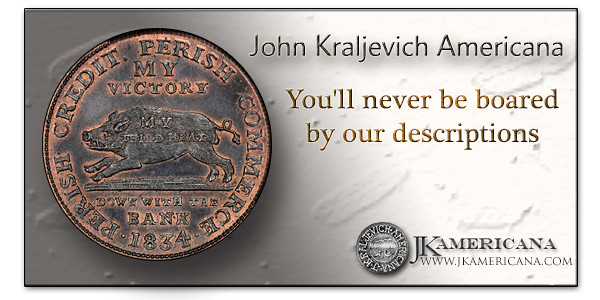
ENGRAVED CONFEDERATE TREASURY SOUVENIR COINS
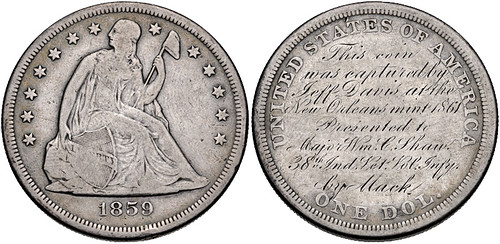
The November 1, 2015 E-Sylum featured Classical Numismatic Group's auction of a Fine well-worn "pocket piece" 1859 Seated dollar hand-engraved in script from "Mack" to an Indiana Reg't. Major.
This piece sold for an astounding $4600 "all in" (15% buyers fee) to an East Coast dealer. I examined it in hand at the Baltimore show, prior to the auction, as CNG's Victor England was kind enough to bring it for me to examine there in preparation for bidding.
The 1859 dollar coin was identical in wear to my 1859 "Jefferson Davis" seated dollar (pictured, ex John J. Ford Jr auction ) which I brought to the show for side by side comparison with the CNG coin. So here are my thoughts on it.
The CNG coin was not carried as a "pocket piece" but sustained this amount of wear in circulation from 1859 to 1865. "Pocket piece" wear would have worn out the hand-engraved inscription and made it "mushy" and indistinct. Circulating silver coinage during the Civil War was "hard" and such coins were particularly scarce in the South.
The inscription is mangled badly, either by the engraver who misunderstood the Major's instructions or by the Major himself who had the coin engraved after he rec'd it from "Mack".
Jefferson Davis did not "capture" the coin at the New Orleans Mint in 1861 as the coin's engraving states. The coin was taken from Jeff Davis' remaining Confederate Treasury (comprised almost exclusively of Mexican silver 8 reales and worn-out US silver coinage ) at Confederate surrender sites to the Union forces at Greensboro, North Carolina in April 1865.
Some of this Treasury was used to pay off departing Confederate soldiers and some coins were selected to be presented to various Union soldiers (or alternately were confiscated by Union soldiers) who shortly thereafter had them hand-engraved as Surrender souvenir pieces by a local jeweler-engraver. I own several of these collected over the decades. The CNG piece is another one of these.
The "Mack" referred to on the CNG piece is most definitely General George McClellan who was known as "Little Mac" due to his very short stature. Due to the status of the Indiana Major, it is possible that Gen'l McClellan may have selected this coin out of the surrendered Treasury and given it to the Major as a souvenir, who had it so engraved afterward. Or, even more likely, that McClellan invited or permitted Union high-ranking officers to select coins out of the Confederate Treasury as souvenirs, thus "presenting" them to the officers, There are a sufficient number of these "Confederate" engraved coins extant to indicate McClellan did in fact know of and approved of the selection and engraving practice.
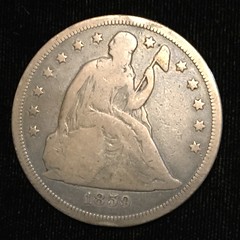

Alan Weinberg's Engraved 1859 Seated Dollar
To read the earlier E-Sylum article, see:
CIVIL WAR ERA ENGRAVED PRESENTATION SILVER DOLLAR
(www.coinbooks.org/esylum_v18n44a25.html)
ART AND ARTISTS ON THE MONUMENTS MEN MEDAL
Pete Smith writes:
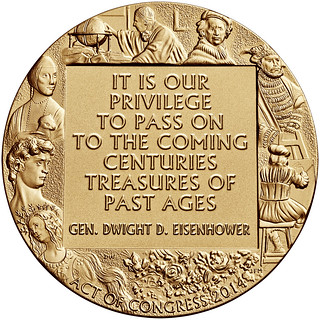 I made a serious effort to identify the works of art illustrated on the "Monuments Men" medal. I am afraid I had limited
success.
I made a serious effort to identify the works of art illustrated on the "Monuments Men" medal. I am afraid I had limited
success.
First I checked for articles that might list the art treasures illustrated. Perhaps the U. S. Mint mentioned them in a press release. No, that would be too much to expect from the Mint. I was also unable to find any other published listing.
Then I tried to identify them visually from lists of recovered works of art. I have only been able to identify five.
At the bottom is a group of flowers. Perhaps there is a way to represent a painting of flowers in medallic art. This medal fails to do this. This might illustrate "Flowers" by Lovis Corinth but it could represent any number of other paintings of flowers.
My five: Michelangelo's David; Leonardo da Vinci's Lady With an Ermine; Johannes Vermeer's The Astronomer; Rembrandt's Self Portrait; and Vermeer's The Art of Painting. The E-Sylum reader who identifies then all has my great respect.
Jim Duncan writes:
I asked the Mint, but they had no idea! They just make em!
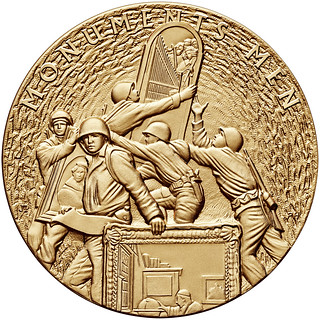 As I make it - using "Saving Da Vinci" by Robert Edsel:- from the left - Lady with Ermine (Da Vinci); The
Astronomer (Vermeer); Rembrandt (self portrait); the mystery man - looks Polish or German to me; The Artist's Studio (Vermeer);
Camilla and the Centaur (Botticelli); and the statue of David (Michelangelo)
As I make it - using "Saving Da Vinci" by Robert Edsel:- from the left - Lady with Ermine (Da Vinci); The
Astronomer (Vermeer); Rembrandt (self portrait); the mystery man - looks Polish or German to me; The Artist's Studio (Vermeer);
Camilla and the Centaur (Botticelli); and the statue of David (Michelangelo)
The other side repeats Rembrandt and Vermeer, but has a section of the Altarpiece from Ghent by van Eyck. (I've attached a picture of the obverse).
Donna Weaver writes:
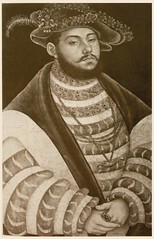 It is from a painting by Lucas Cranach the Elder of Kurfürst Johann Friedrich von Sachsen (Elector John Frederick of Saxony). The painting
is one of those that is still missing.
It is from a painting by Lucas Cranach the Elder of Kurfürst Johann Friedrich von Sachsen (Elector John Frederick of Saxony). The painting
is one of those that is still missing.
To read the earlier E-Sylum article, see:
NOTES FROM E-SYLUM READERS: NOVEMBER 8, 2015 : Quick Quiz: Art and Artists on the
Monuments Men Medal (www.coinbooks.org/esylum_v18n45a09.html)
THE BOOK BAZARRE
WILLIAM BENTLEY (1759-1819)
He's been working for years researching 18th century American numismatists and dealers, and has uncovered quite a bit of information that pushes back our knowledge of this area by over a century. His book will be titled Numismatic Collecting in 18th Century America.
This week's subject is Rev. William Bentley of Salem - bibliophile, collector and dealer. -Editor
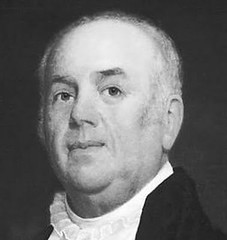 William Bentley (1759-1819), was born on June 22, 1759, at Boston, Massachusetts. He graduated Harvard University in 1777. He was ordained
a minister in 1783. He became the pastor of the East Church (Second Congregational Church) at Salem where he remained lifelong.
William Bentley (1759-1819), was born on June 22, 1759, at Boston, Massachusetts. He graduated Harvard University in 1777. He was ordained
a minister in 1783. He became the pastor of the East Church (Second Congregational Church) at Salem where he remained lifelong.
Rev. William Bentley is most noted for having compiled the second largest library in the United States, comprising over 4,000 volumes, and was only second to that of Thomas Jefferson.
In his biography written by Judge Waters, he recorded:
“The collection of coins and rare books was another of his favorite pursuits, and to gratify him in these respects was a leading object of every ship-master of our parish who went abroad. Scarcely a vessel arrived that did not bring valuable contributions to his cabinet or library, so that some of his collections were indeed very rare and valuable and often consulted by every virtuoso in the neighborhood.
"The coins were mostly transmitted to his friend, Judge Winthrop of Cambridge. All the specimens in natural history thus furnished were suitably arranged in their respective classes and upon the establishment of the East India Marine Society, made an important addition to its valuable museum.”
Rev. Bentley was the central numismatic figure in late 18th century Salem creating interest and inspiring some to study and collect coins. His interest in coin collecting and coin dealing was widely known during his lifetime and his most celebrated client was Judge Winthrop of Cambridge. Below is an inventory for an invoice sent by Rev. Bentley to Judge Winthrop for various coins quoted from his Diary.
“A list of Medals & Coins sent to Mr. Winthrop of Cambridge. Medal from Sweden in honor of the Augsburg Confession.
A George reigning.
A Pitt.
Coins:
Russian, 4 Copec.
Danish, XXIV skill:
XII skill:
George II, penny: eng:
Charles I, penny.
Charles rose. Jus divinum.
St. Pelegrin.
five northern Copper Coin.
& besides Chinese Lanthorn.”
It appears that the majority of the proceeds from his coin sales were given to the poor and needy. The entrepreneurial coin dealer had no self-interest whatsoever but used his coin dealings as a charity fund raiser to help support the downtrodden of his parish and others known to him. It would serve readers well to learn from him.
It appears to this writer that Rev. Bentley was the spiritual father not only of souls but also of coin collecting and coin sales in Salem since the late 18th century.
Rev. Bentley died on December 29, 1819, at Salem, Massachusetts.
To read the complete article, see:
BENTLEY,
REVEREND WILLIAM
(https://sites.google.com/site/numismaticmallcom/encyclopedic-dictionary-of-numismatic-biographies/bentley-william)
BOB VLACK, A PERSONAL REMEMBRANCE
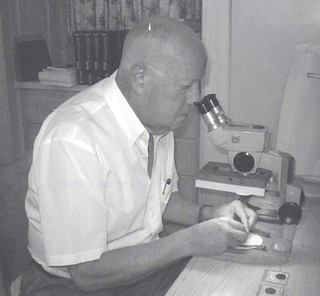 It was with heavy heart that I read of the passing of Bob Vlack, truly one of the giants of the colonial hobby. Even though Bob had been in
poor physical health and suffering from advanced dementia in his final years, the loss is still keenly felt by all who knew him. Elsewhere Ray
Williams has penned an obituary that covers the pertinent details of Bob's life, but I thought I would share a few personal memories of the man,
the kind of stories that get lost to history once another generation passes away.
It was with heavy heart that I read of the passing of Bob Vlack, truly one of the giants of the colonial hobby. Even though Bob had been in
poor physical health and suffering from advanced dementia in his final years, the loss is still keenly felt by all who knew him. Elsewhere Ray
Williams has penned an obituary that covers the pertinent details of Bob's life, but I thought I would share a few personal memories of the man,
the kind of stories that get lost to history once another generation passes away.
It's hard for me to believe that I first got in contact with Bob four decades ago! What is even harder to fathom is that I am now a half-century old (edging in on antique status myself), and that I was all of 10 years old when I got in touch with one of the leading researchers, writers and dealers. Harder still to imagine is Bob's response to a precocious kid – nothing but kindness and support. Bob was one of the few dealers who never "talked down" to a kid, and that made all the difference to a budding numismatist. Instead of rolling his eyes and saying "I have some nice VF Lincoln pennies to show you" he embraced the fact that a kid could have an interest in colonials – and be serious about them even when his budget was limited to birthday gift cash, allowance and paper route money.
I finally met him in person in my late teens (I think it was at a Cherry Hill, New Jersey show in the early 1980's, though I am sure he was in attendance at the Garrett sales in the 1979-1980 period, though I was there just as an observer and don't recall introducing myself to anyone since I was an awkward, pimply faced 15 year old at the time). Bob was exactly the same in person as he was in his letters to me – enthusiastic, generous with his knowledge and full of stories of the past. As I got to know him better I was able to hear all sorts of stories that never made it into print but which "filled in the blanks" with certain events and personalities. To this day I regret not buying a tape recorder, taking him out to dinner and saying "Bob, just start talking..."
It helped that Bob and I had very similar collecting interests, of course. The first coin I ever bought was a US Large cent (at a cost of 75 cents, and I still have it). The second coin was a 1787 Connecticut copper, Miller 39.1-h.1, a nice VF piece that cost around $35, a veritable fortune at the time (I was then 7 or 8 and was flush with birthday cash and visited a coin store near where my family had dinner to celebrate – fortuitous timing indeed). From that moment on, Connecticut coppers were one of my main areas to collect, along with Washingtonia (a collection I soon traded to the late Jack Collins, igniting his passion for the series, and getting some rare books in return, including an original Dr. Hall...on 1787 Connecticut coppers, of course).
Bob and I were soon corresponding every few months or so. He answered questions patiently, pointed me in the right directions for further research and would occasionally mail surprises out of the blue – some photographs, copies of the plates he had done, copies of notes he had made, whatever. Perhaps the biggest surprise was when a large Registered package arrived – Bob sent me what was left of his third collection of Connecticut coppers; perhaps 100-odd coins (the first two had gone to Ned Barnsely and Ted Craige respectively, and George Perkins had the pick of the third collection before I did). Imagine today a dealer sending a kid – and one he hadn't yet personally met! – about $5,000 in coins, which would be the equivalent of about $50,000 today.
There were a bunch I needed, of course, and I finally ended up interested in about half of the box. I didn't even need to explain my finances to Bob, he said "pay me what you can, as you can." It took a year or so to get it all paid, but Bob's kindness stuck with me, and I've always offered collectors the same type of payments without interest. Perhaps it was just good business sense on Bob's part – get some new blood, and get them hooked! – but it was far more his generosity, kindness and his faith in collectors.
Bob soon got me addicted to my next major area of collecting, the French Colonies coinage for North America. For well over a decade I was lucky enough to get first pick of his duplicates (a privilege that lasted until C4 Editor Syd Martin also became interested in the series, and then we were both shown things at the same time, often splitting them between us). Bob's ongoing research and addictive enthusiasm meant that I went from doing a mintmark set (one from each of the 28 French mints), to a date and mintmark set of 100-odd pieces to getting interested in die varieties and other adjunct areas and eventually forming not one, but two collections that were over 800 coins apiece.
Sharing my new finds with Bob was always a thrill – he got as excited as a kid when something new was found (and I hope that we ALL retain that kind of childlike wonder well into our own sunset years). Indeed, in one of his last typed letters to me (he eventually switched to e-mail, one of the first "seniors" I knew who could figure it out) he said that the photograph he picked for his profile in his French Colonies book was him sitting at his microscope and examining a box of coins – which was actually my collection that I had mailed him intact for him to go through to find new varieties!
Not unexpectedly Bob’s excellent eyes found a good dozen-plus new additions to his Sous Marques section in that box – and he good-naturedly cursed me for forcing him to renumber all the varieties he already had just to get them in.
Bob was a fixture at coin shows for decades, hitting many of the larger ones in the northeast, as well as some of the FUN shows after he retired to Florida fulltime. He set up at every C4 Convention in Boston until his health declined too much to do so (though he always held out hope that he would be able to set up the following year, something that sadly never happened).
Despite having a room full of colonials, Bob's table was ALWAYS my first stop, facing the entrance door, slightly to the left as you walked in. Some years there would be lots of additions to my collection, other years just a few – but there was never a show that he didn't have something that called out to me. One needed to get to his table fast, because he would invariably have a crowd 3 or 4 people deep – some looking, some asking questions, some reminiscing, all enjoying their time with a very special man.
But one never mistook his kindness for weakness of any sort – I remember one ANA convention where Bob had brought a very large selection of choice colonials. Don Partrick who, even then, had the finest collection of colonials formed had put together a large pile of things he wanted to buy, in the tens of thousands of dollars. He wanted a sizable discount, 20% if memory serves. Bob looked at him and said "Don, I'm a 10% kind of guy and I'm not giving you more off than that." These two icons stared at each other a bit and Don pulled out his checkbook and bought the group. Had he held out for 11%, Bob would have let him walk away!
At another ANA show a dealer had set up with a display of colonials that included a large number of counterfeits in off-metals, phony die trials and the like. One came with a purported letter from Bob, claiming that a St. Patrick die trial was absolutely genuine – the letter was a poor Xerox with every other word misspelled, and Bob who was quite the literate man was furious when I mentioned it to him. He ran over to that table and demanded the letter be given to him where he ripped it up and threw it at the dealer, saying that his integrity was never to be soiled like that again.
While many collectors today know of other giants from the 50's and 60's only from their written works or the (eventual) sale of their collections – Ford, Newman, Picker, Hoch, Keller, Spilman, Breen, etc. – Bob was more than just a name that they read about. He was out there, meeting people, fueling their enthusiasm and taking care of his own intellectual curiosity along the way.
Bob was a lover of the unexplored and a keen student of minutiae. When you look at some of the areas that he published monographs on – the 1783 Washington coinage, the 1767-A French Colonies Copper sols, the Atlee "Machin's Mills" Coppers and the billon coinage for the French Colonies – you see the workings of a mind who could make some sort of sense of areas that were previously ignored, or thought too complex to study seriously. Most of this research was, of course, done the old fashioned way – hands on examination of actual coins, long before the ease of digital files could be quickly zapped around the world, with descriptions meticulously written out by hand.
But Bob also did significant research that was never published, but which served as the basis for other researchers. Syd Martin's works on Rosa Americana, Hibernia and his soon-to-be-published work that includes the 1721-2 French Colonies copper 9 Deniers all owe a debt of gratitude to the groundbreaking work Bob did in those areas – and unlike some collectors of his generation, notably John Ford, Bob was always willing to share his information with other collectors, not just hoard it for his own use.
Bob's French Colonies collection, which was sold by Stack's shortly after his book on the series came out, may be the only public auction with his name on the coins sold. But Bob actually formed many first-rate collections that were dispersed privately, and often purchased intact by serious collectors. His Massachusetts silver was the basis of the Hains collection, his Massachusetts coppers went to a private collector, as did his Vermont coppers, his Atlee coppers, New York patterns, Washingtonia and other fine groups he formed at a time where there was very little real competition.
He put together excellent collections of world coins, paper money, advertising paper (which he also wrote the standard reference book on) and, like most of us, also collected outside of numismatics, especially some areas of antiques – and, not unexpectedly, he wrote about those areas too, authoring a work on "head vases" after he formed one of the largest collections ever put together (these were vases in the form of a head, often a famous person, which were popular in the mid-20th century, though some went back to the 19th century).
Bob always did well when he sold his collections – not only because he owned things for long periods of time, but because he had the knowledge and skill to cherrypick rarities, had contacts going back decades that supplied him with goodies and collectors who trusted his judgment on what things were worth, a trust that was well-earned over the course of his career.
He was the consummate gentleman dealer, never holding out for absolute top dollar on every item he sold (or worrying if someone slabbed a coin 1 point better than his). Collectors today rightfully prize anything with a Vlack pedigree – especially if they come in some of his older custom-made coin envelopes, the finest of which show a witch on a broom in red ink (the image taken from a “We All Have Our Hobbies” token), with the details of each coin painstakingly typewritten, often in a distinct green ink.
Colonial numismatics has been fortunate in attracting some very intelligent and enthusiastic people, but in this writer's opinion there are four that contributed far more than the usual level of participation. There were many others, of course, some who formed great collections but didn’t participate much other than the actual acquiring; some who wrote an occasional article or made a nice discovery, and others who participated for short periods of time and then left. But these "Big Four" did more than all the rest to popularize colonials – and without them, the hobby as we know it would be a vastly different area.
Those four are Eric Newman, Walter Breen, Jim Spilman and Bob Vlack, and we are all better off for much of their interests being focused on areas we collect. Bob was one of the last of a dying breed, a combination of collector, researcher, writer and dealer, something of a Renaissance man since he did all these areas equally well (none of the other three ever really adding dealer to their resumes). I was most fortunate to know him for such a long period of time and to call him a friend.
To read the earlier E-Sylum article, see:
ROBERT A. VLACK, 1927 - 2015 (www.coinbooks.org/esylum_v18n33a05.html)

SLEUTHING OBSOLETE CURRENCY SECRETS
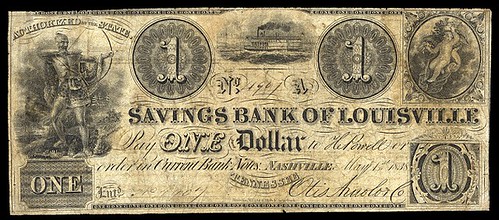
If you’re looking for a chance to explore numismatic intellectual puzzles, a great place to start is in the world of obsolete paper money!
Today I was presented with a single note of paper money—a $1 bill of the Savings Bank of Louisville. On its face it looks like many other notes of obsolete paper money, with vignettes and counters, the name of the institution, the denomination, the date, and signatures. Easy to let your eye slide over it and on to the next thing, in favor of something with perhaps more color or mythological objects. At first glance, this would not be a note I would judge to be very interesting, among the thousands and thousands of notes out there to peruse.
But they say you should never judge a book by its cover. The same goes with paper money. Never judge the complexity of the mystery by the complexity of the design.
When I am looking for information on a note, the place I always start is the bank name and the location. The title is bold and easy to see. And if you look closely at the bottom of the note, you can see that this note is payable “in Current Bank Notes” in “Nashville, Tennessee.” So far so easy. But a search for a Savings Bank of Louisville in Nashville, Tennessee, comes up fruitless. No records of any kind to be found.

Now we get into the twisty and odd world of obsolete paper money legislation. For example, was this bank chartered in Nashville at all? Should I search for a Louisville County that perhaps had some early borders around Nashville? Searching for Louisville County leads me to a different town, Louisville, Tennessee, which was established in the early 1800s and officially incorporated in 1851. Another possibility. The title indicates that “Louisville” had something to do with the bank’s location. Just looking at the note does not tell us exactly what, however, and the number of options is growing. Perhaps, for example, the note had a branch in either Nashville or Louisville, with a parent bank located somewhere else.
Another potential option appears as we dig even further—perhaps this bank was not chartered in Tennessee at all!
To read the complete article, see:
Sleuthing the Numismatic Way
(http://news.coinupdate.com/sleuthing-the-numismatic-way/)
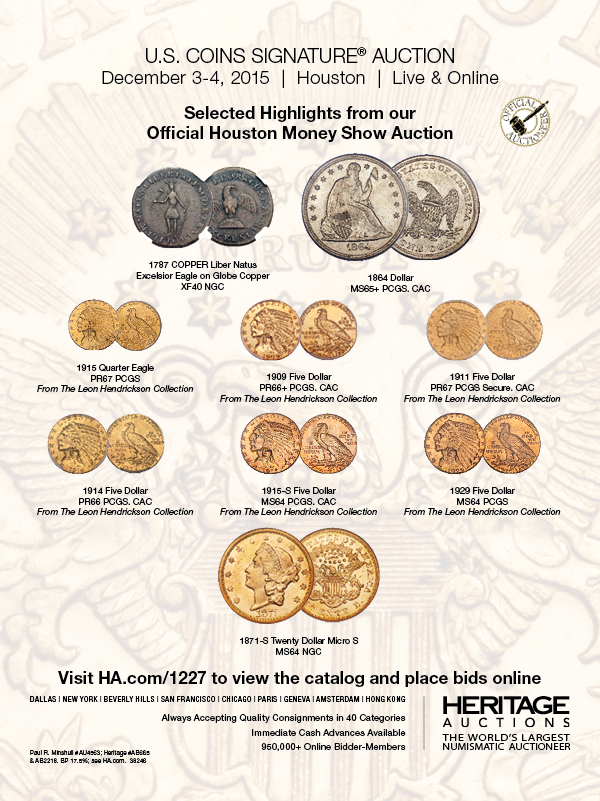
REBUS PUZZLE: AMERICAN SHOE COMPANY
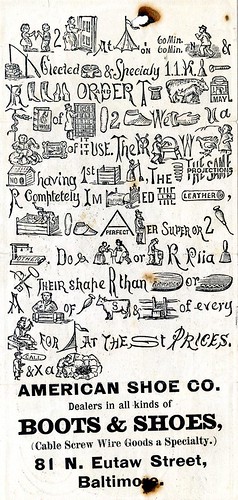 We didn't have any takers on that tough rebus puzzle on Dave Schenkman's American Shoe Co. advertising note from Baltimore. Here it
is again. -Editor
We didn't have any takers on that tough rebus puzzle on Dave Schenkman's American Shoe Co. advertising note from Baltimore. Here it
is again. -Editor
To read the earlier E-Sylum articles, see:
REBUS PUZZLE: FORDHAM'S, MONTROSE, PA
(www.coinbooks.org/esylum_v18n42a27.html)
MORE REBUS PUZZLES : Rebus #2: J. Pels & Son, Baltimore. MD
(www.coinbooks.org/esylum_v18n43a17.html)
REBUS PUZZLE: J. PELS & SON, BALTIMORE. MD
(www.coinbooks.org/esylum_v18n44a26.html)
REBUS PUZZLE ON 1848 MEDAL
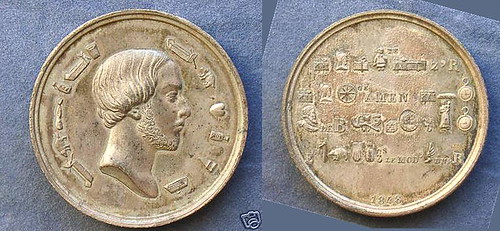
Philip Mernick writes:
I found this rebus medal while browsing my eBay image files. I saved it in August 2011 but unfortunately I didn’t keep the original text. It's a French medal from 1848 so presumably refers to the revolution of that date. The answer might appear in the Saulcy catalogue of 1848 medals, which I don’t have.
THE BOOK BAZARRE
HANDLING AND PRESERVING PLASTER COIN MODELS
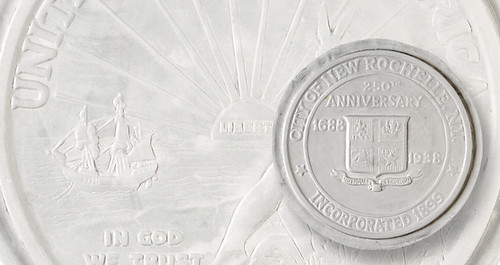
Many numismatists have plaster objects in their collections, whether they be a cast of a coin, an artist’s rendition or a limited edition reproduction of an artist’s original work.
Plaster is a form of calcium sulfate. It is made by heating gypsum rock to remove its water, which creates calcium sulfate hemihydrate. This is then ground into a powder, commonly known as plaster of paris. The powder is then mixed with water so it can be sculptured or cast in a mold. Plaster sets up — or dries — through a chemical reaction. This reaction is exothermic, meaning it gives off heat as it takes place. Depending on the volume of plaster being used, the amount of heat generated can be considerable.
Artists commonly use plaster as a medium because it can replicate fine detail when cast and because it shrinks very little when it dries, unlike clay and other materials used in modeling. Its low cost also has made it appealing. Small plaster casts, such as those found in numismatic collections, are likely solid. Although plaster is commonly left “raw,” it can also be sealed with a clear sealant or decorated with paint and pigments.
Plaster is brittle and fragile. It will break if dropped or knocked hard enough. Plaster pieces should be displayed so that they are safely out of harm’s way. Handle plaster pieces with great care. If packing for shipping, make sure that the object is well padded and packed so that it cannot move around inside the box. Plaster is also fairly soft and will scratch easily.
Humidity/moisture is a big concern with plaster. Plaster is slightly soluble in water and prolonged exposure to high humidity will cause the plaster to disintegrate.
Plaster is sensitive to acids. As such, any materials in intimate contact with it should be acid-free and inert, similar to what is recommended for metal coins tokens or medals.
Plaster is porous and, if unsealed, will soil easily, absorbing dirt and grime. Once soiled, it is very difficult to clean without adversely affecting the surface of the plaster. Preventing soiling is the best approach.
Handle plaster objects with clean dry hands. Store in an archival-quality box. Exhibiting plaster objects in a display case or behind glass will help keep them from getting soiled. If a plaster objects becomes dusty, remove the dust carefully with a soft brush or a clean dusting cloth. Do not use water to clean plaster objects. Water can dissolve the plaster and will drive any dirt into the plaster, making it even harder to clean. Abrasive techniques, such as erasers, are not recommended as they can cause the surface of the plaster to become burnished, changing its appearance.
To read the complete article, see:
Plaster objects need
special handling: Preserving Collectibles
(www.coinworld.com/news/us-coins/2015/11/plaster-objects-need-special-preservation-handling.html)
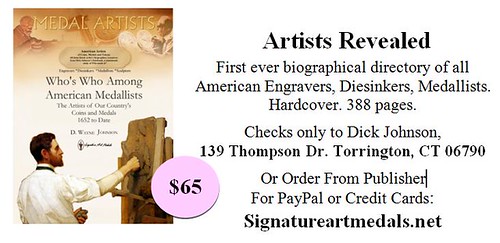
QUERY: PHILADELPHIA MINT SOUVENIR VISIT MEDALS
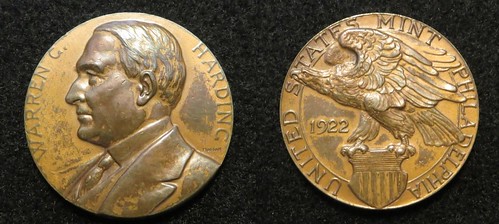
I'm looking for information regarding Philadelphia Mint souvenir visit medals, issued from the 1920's through the 1940's. These were small bronze pieces, 33.2 mm to 33.8 mm, that featured the portrait of the President (Harding through Truman) used in the Mint's Presidential series on the obverse, and either a defiant eagle or third Philadelphia mint façade on the reverse.
Some of the medals are dated, some are not. I understand that the late Assay Medal collector and expert Ernie Keusch identified 17 different medals in the series. Does anyone know if Keusch or anyone else ever published anything on the series and, if so, where and when? I've attached pics of typical medals from the series.
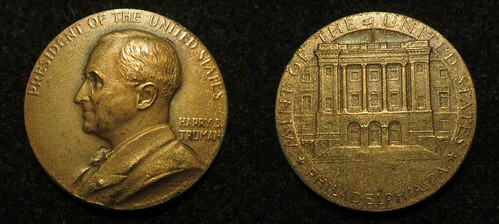
I've written before about the lack of comprehensive reference materials regarding the medallic output of the United States post Julian. It's pretty amazing to have this sort of gap, but also pretty cool trying to tease out the history without it.

THE ROYAL MINT'S 2016 COIN DESIGNS
Those of you who have been collecting coins for a few years or more will know that November is normally an exciting time at The Royal Mint, as the coins of the following year are released. So, you’ll be excited to learn that on Monday the new coins for 2016 were announced! In total, eight 2016 UK coins have been revealed alongside The Sovereign for 2016.
Anniversaries for William Shakespeare, The Great Fire of London and the Battle of Hastings are all marked on UK coins in 2016. A £2 coin honouring the Army’s role in the First World War continues the First World War coin collection, and The Queen’s 90th Birthday is also celebrated with a UK coin. 2016 is also the year of the last ’round pound’, with the new 12-sided £1 being introduced in 2017. So, without further ado, here are the 2016 coins revealed this week:
The Queen’s 90th Birthday 2016 UK £5 Coin
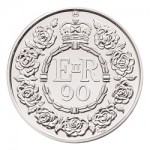 The 90th Birthday of Her Majesty The Queen 2016 United Kingdom _5 BU RevIn 2016, Her Majesty The Queen will celebrate her 90th birthday –
the first British monarch ever to do so. Acclaimed artist Christopher Hobbs has created a design for this coin to mark the occasion, inspired by the
heraldic rose of England and The Queen’s own love of roses.
The 90th Birthday of Her Majesty The Queen 2016 United Kingdom _5 BU RevIn 2016, Her Majesty The Queen will celebrate her 90th birthday –
the first British monarch ever to do so. Acclaimed artist Christopher Hobbs has created a design for this coin to mark the occasion, inspired by the
heraldic rose of England and The Queen’s own love of roses.
This coin isn’t available individually right now, but you will find it in the 2016 Annual Sets.
The 350th Anniversary of The Great Fire of London 2016 UK £2 Coin
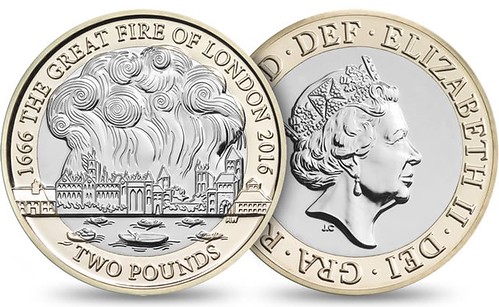
On a September evening in 1666 The Great Fire of London started in a baker’s shop in Pudding Lane. Royal Mint graphic designer, Aaron West, has captured the event that changed the face of the City of London forever, on a 2016 £2 coin.
The 400th Anniversary of the Death of Shakespeare 2016 UK £2 Coins
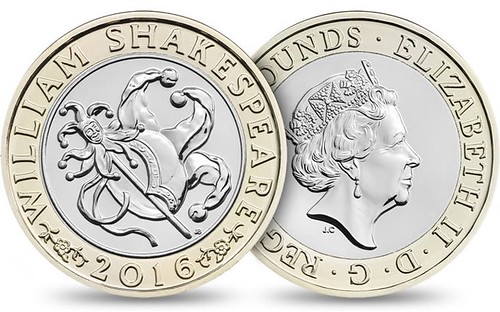
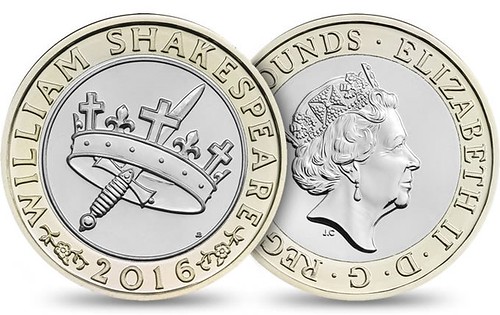
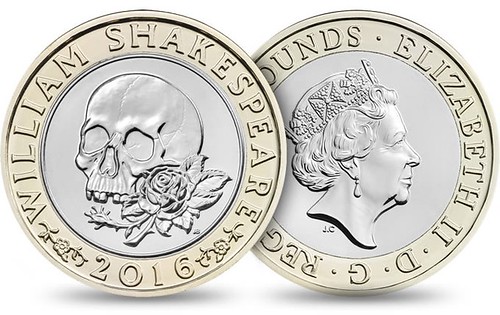
William Shakespeare remains a household name 400 years after his death, and his writing is still central to our everyday language and school curriculum today. Shakespeare’s works make many references to coins, so it is apt that for 2016, three £2 coins reflect three aspects of his work: Tragedies, Histories and Comedies.
The Army 2016 UK £2 Coin
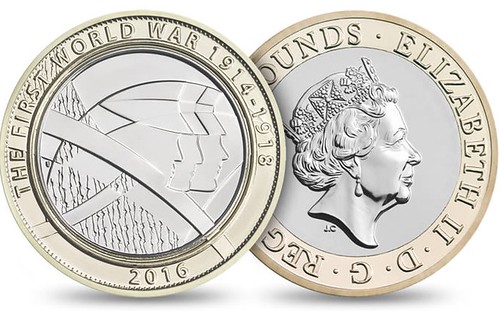
In 1914, as Britain mobilised for war, the whole country was swept by patriotic fervour in response to Lord Kitchener’s call to arms. Team mates, friends, neighbours and colleagues served side by side in ‘Pals’ Battalions to defend their country – a spirit of camaraderie that is remembered on this £2 coin by graphic designer Tim Sharp.
The Last ‘Round Pound’ 2016 UK £1 Coin
 With a brand new 12-sided £1 coin entering circulation in 2017, the 2016 £1 coin marks the end of an era for the popular British ‘round
pound’, first introduced in 1983. The 2016 £1 will be of particular note to collectors because it will not be available in general circulation.
With a brand new 12-sided £1 coin entering circulation in 2017, the 2016 £1 coin marks the end of an era for the popular British ‘round
pound’, first introduced in 1983. The 2016 £1 will be of particular note to collectors because it will not be available in general circulation.
This coin isn’t available individually right now, but you will find it in the 2016 Annual Sets.
The 950th Anniversary of The Battle of Hastings 2016 UK 50p Coin
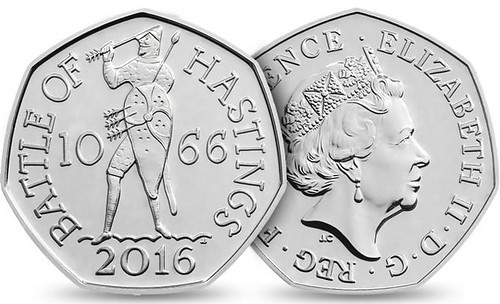
The 950th Anniversary of The Battle of Hastings 2016 United Kingdom On 14 October 2016 Britain will remember the 950th anniversary of The Battle of Hastings – a landmark moment in British history. The 50p coin features a reverse design by sculptor of repute, John Bergdahl, and depicts the famous fate of King Harold.
The Sovereign 2016
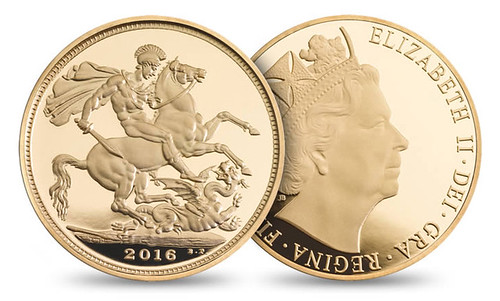
The Sovereign returns in 2016 with the familiar St George and the dragon design. However, you may notice something different about our flagship coin this year. The 2016 Sovereign features a celebratory obverse portrait for one year only on Proof Sovereign coins, to mark Her Majesty The Queen’s 90th birthday year. This is only the second time in Queen Elizabeth’s reign that a commemorative portrait has been used on Sovereign proof coins, the last time being in 1989.
To read the complete article, see:
The 2016 UK coin designs revealed
(http://blog.royalmint.com/the-2016-uk-coin-designs-revealed/)
NUMISMATIC REMEMBRANCES OF GUY FAWKES
A Penny for the Guy
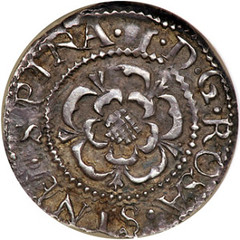
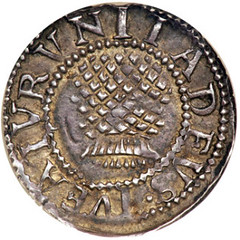
James I (1603-25) silver Thistle Penny.
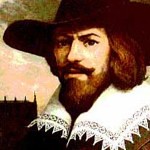 One of the plotters, Guy Fawkes by name, was caught with dozens of kegs of gunpowder in the basement of the Houses of Parliament. He was
waiting for a signal that the King had arrived to open Parliament, to light the fuses. He and his fellow plotters were rounded up and dispatched from
this world with very nasty means of execution. But the event is celebrated to this day with bonfires, fireworks and burning Guy in effigy, while
children sort of “Trick or Treat,” asking for “a penny for the Guy.” The mask used in the movie V for Vendetta is Guy Fawkes’ visage.
One of the plotters, Guy Fawkes by name, was caught with dozens of kegs of gunpowder in the basement of the Houses of Parliament. He was
waiting for a signal that the King had arrived to open Parliament, to light the fuses. He and his fellow plotters were rounded up and dispatched from
this world with very nasty means of execution. But the event is celebrated to this day with bonfires, fireworks and burning Guy in effigy, while
children sort of “Trick or Treat,” asking for “a penny for the Guy.” The mask used in the movie V for Vendetta is Guy Fawkes’ visage.
Numismatic Remembrances of Guy Fawkes
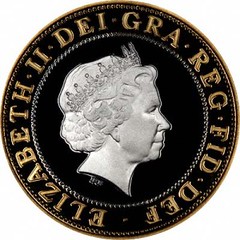
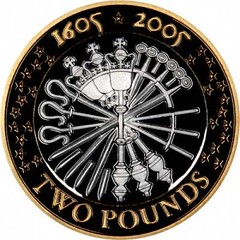
In 2005, to commemorate the 400th Anniversary of Guy Fawkes and the Gunpowder Plot, the British Royal Mint struck a commemorative Two Pound Coin. The center of the reverse has a circular arrangement of state, the mace, crosier and sword with the denomination ”TWO POUNDS” and the dates “1605” and “2005” with the edge inscription “REMEMBER, REMEMBER THE 5TH OF NOVEMBER”. The coin was designed by Peter Forster and was struck in a bimetallic cupro-nickel version for circulation and in silver, silver piedfort (pictured above) and gold.
 [And] ... we have a 1935 Buffalo nickel that has been engraved to look like Guy Fawkes This design was created by Stephen D. Cox, who has
engraved his initials under the buffalo on the reverse. Only the date and the legend of LIBERTY remain from the original design on the obverse. A
chain border surrounds the portrait of Fawkes.
[And] ... we have a 1935 Buffalo nickel that has been engraved to look like Guy Fawkes This design was created by Stephen D. Cox, who has
engraved his initials under the buffalo on the reverse. Only the date and the legend of LIBERTY remain from the original design on the obverse. A
chain border surrounds the portrait of Fawkes.
To read the complete articles, see:
A Penny For The Guy
(http://fourthgarrideb.com/2015/11/a-penny-for-the-guy/)
Numismatic Remembrances of Guy
Fawkes and The Gunpowder Plot (http://fourthgarrideb.com/2015/11/numismatic-remembrances-of-guy-fawkes-and-the-gunpowder-plot/)
THE BOOK BAZARRE
WAYNE'S NUMISMATIC DIARY: NOVEMBER 15, 2015
Tuesday night, November 10, 2015 was the monthly meeting of my Northern Virginia numismatic social group, Nummis Nova. Roger Burdette was our host. We met at J. Gilbert's, a steakhouse in McLean, VA. My GPS took me on an adventurous route, down a few roads I've never before been on or even heard of. But it got me there in plenty of time; in fact, I was about an hour early.
So after calling my wife, I went inside, took a seat at the bar, and ordered a drink. Luckily, Eric Schena was early as well and soon joined me. We chatted for a while then went to our table along with Wayne Herndon. We were in a nice cozy alcove, separated from the main dining area.
Joining us before long were Joe Esposito, Steve Bishop, Jon Radel and Roger, who sat near me and Eric. The rest of the table soon filled up with regulars Gene Brandenburg, Dave Schenkman, Joe Levine, Julian Leidman, and Mike Packard.
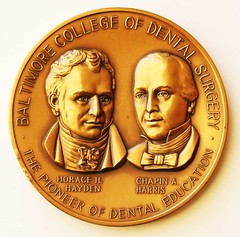

Roger had the pleasure of enduring a root canal that afternoon, so he'd declared the evening's theme to be dentistry. The only one to bring something related to the theme was Dave Schenkman, who had this Baltimore College of Dental Surgery medal.
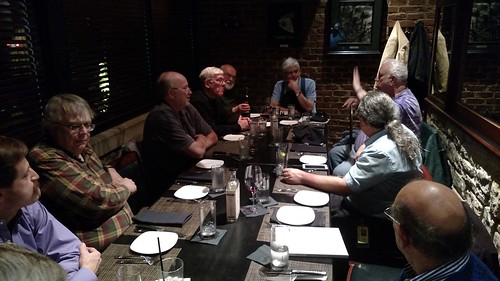
Wayne Herndon, Jon, Mike, Dave, Gene, Julian, Steve, Eric, Joe Esposito
Photo by Wayne Homren
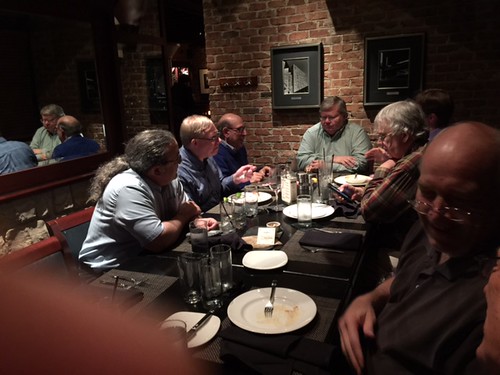
Eric, Wayne, Joe Esposito, Roger, Wayne Herndon, Jon, Mike
Photo by Gene Brandenburg

Joe Levine, Steve Bishop. Photo by Gene Brandenburg
Mentoring Not-So-Young-Anymore-Numismatists
Before the meeting got too crowded, I led our end of the table in a discussion about organizing a program for
Not-So-Young-Anymore-Numismatists in our area.
We agreed that it should not be explicitly tied to Nummis Nova, since not everyone would be involved but mostly because the group is explicitly designed to be a purely social group with no committees, responsibilities, or structure. While several of us might end up mentoring or otherwise participating, it would be done on an individual basis.
We'll get started after the regular December Annandale coin show kids meeting, where Joe Esposito has already volunteered to be a speaker. Thanks!
What Is a Collector?
Led by Wayne Herndon, our end of the table had a great discussion about what it means to be a collector.
We agreed that there's a "collecting gene" - that either you have it or you don't. Some people are just born to be collectors. And collectors often collect more than one thing. While all of us in our group are coin collectors, we have other collections too, from antiques to books to banjos. While spouses and friends might also purchase and accumulate similar items, they just don't have the same drive as a collector. They may see something pretty or interesting and decide to acquire it. But a collector is driven seek out their quarry, and will go to great lengths to find it.
Wayne mentioned one customer who is working on birth year coin sets - not just or his own birth year, but those of his wife, their kids, parents, grandparents etc., back five generations. What a great idea! He comes to every show armed with checklists and returns home with new purchases.
Collectors are driven by the urge for completeness, but there's more to it than that. I noted somewhat sheepishly that I'd never been so driven to actually complete any collection I'd started. My first collection, of Lincoln cents, still lacks four key dates. As an adult I could have purchased those coins anytime, but I moved my sights to other prizes. I worked for years acquiring U.S. Encased Postage Stamps and again ran out of money and time to complete it before deciding to sell.
So while completeness is a goal, it's not the key factor. My journey is a common one. Many collectors are serial collectors - they work on assembling one collection, then move on to another collection even if they haven't finished the first. So it's not the destination - it's the journey. Collectors are driven by the quest. The joy is in the seeking and finding, not the having. Wayne noted that as a dealer, the hardest things to sell are, paradoxically, complete sets. Why? Because where's the fun in that? Collectors like the concept of a complete collection, but their focus is on the HOLES. What they have is nice, but what drives them is DON'T HAVE YET.
Transit Company Token Hub
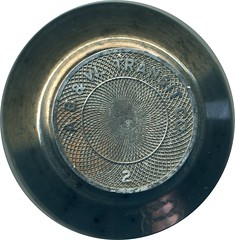
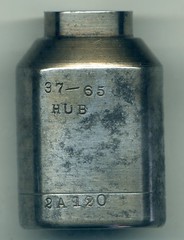
Eric Schena brought a rare and interesting item. He writes:
I have a penchant for dies used to strike tokens from the Mid-Atlantic region and have a fair number of them. My most recent acquisition is an unusual one: a hub for a transportation token. Most trade tokens were struck in small enough quantities that usually one or two die pairs were sufficient to produce the entire run. Transportation tokens were sometimes made in larger quantities so a hub may make some sense.
This hub was used to produce the dies used for Atwood-Coffee VA 20-L and 20-M for the Alexandria Barcroft & Washington Transit Company in the late 1950s. This is the first and only token hub I've run across and is doubly appealing for me since it's for a local company.
Mining Company Notes
Dave Schenkman brought along three mining company notes he purchased from Heritage’s most recent sale of the Eric Newman collection. His
comments are shown below the notes. I've only pictured the front, but the backs are available on our Flickr archive. Just click on the
note to go to Flickr and look at the adjacent image.
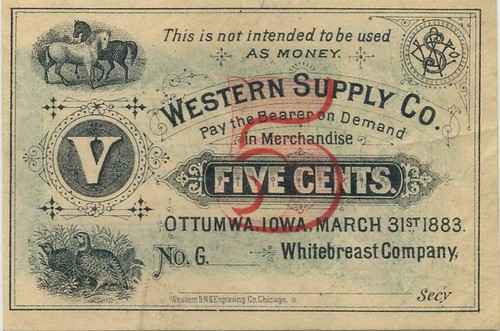
Dave writes:
Western Supply Company was the company store for Whitebreast Coal & Mining Company. The company also issued bimetallic tokens.
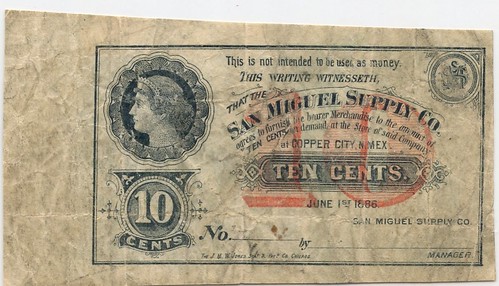
Dave writes:
San Miguel Supply Company was the company store for San Miguel Mining Company, a copper mining operation. I didn’t know the note existed until this one was offered by Heritage.
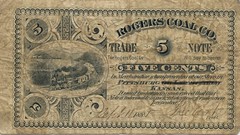
Dave adds:
The third note I purchased from Heritage’s most recent sale of the Eric Newman collection is this one, issued by the Rogers Coal Company of Pittsburg, Kansas. Only a few Kansas coal companies are known to have issued notes. All are rare with one exception; the notes from Miller Brothers & Company of Mulberry. A five cents denomination is listed in Steve Whitfield’s catalog, Kansas Paper Money, with the notation that it is unique. In obsolete paper money, as with tokens, unique can be a transient quality. In this case, a hoard of about 140 of the notes, including five and ten cents denominations, surfaced three or four years ago. The owner is bleeding them out, and occasionally one will appear on eBay. The last Heritage sale offered a ten cents in “gem uncirculated 65 EPQ” condition, and it brought $705, which is several times what a note with seventy pieces known should be worth.
Oregon Trail Plaque
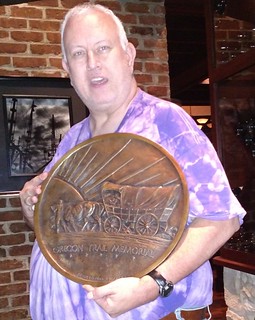 Dave Schenkman adds:
Dave Schenkman adds:
At our part of the table tropics ranged from last week’s Baltimore show to a huge Oregon Trail plaque Steve Bishop had just purchased; neat item but it appears to be a recast. As I recall, originals are 16½” and this one was 16”. Another topic that comes to mind was an 1855 California Gold $1 coin of mine that Gene had slabbed for me.
Steve's returning the plaque to the seller. It's a very nice item regardless, but not at the high price of an original.
Thames Tunnel Medals
 Joe Esposito brought a couple of interesting medals and a related book about a tunnel under the Thames river in London. I thought I
recognized the tunnel immediately - back in September 2007 brothers Harry and Philip Mernick treated me to a tour around London, and at one point we
walked through a tunnel beneath the Thames river.
Joe Esposito brought a couple of interesting medals and a related book about a tunnel under the Thames river in London. I thought I
recognized the tunnel immediately - back in September 2007 brothers Harry and Philip Mernick treated me to a tour around London, and at one point we
walked through a tunnel beneath the Thames river.
We weren't going to take a train or bus to the other side of the river - we were going to walk - UNDER it. On opposite banks of the river stood two cylindrical domed structures. These were the entrances of a pedestrian tunnel (the Greenwich Foot Tunnel), built beneath the Thames in 1902. Each of the structures houses a spiral staircase and a lift (elevator). We walked down the stairs on the north bank and rode the lift up on the south bank, emerging near the Greenwich dock and the Cutty Sark.
But Joe's book and medals weren’t about this tunnel; instead, they related to a much earlier one, the Thames Tunnel. From Wikipedia:
The Thames Tunnel is an underwater tunnel, built beneath the River Thames in London, connecting Rotherhithe and Wapping. It measures 35 feet (11 m) wide by 20 feet (6 m) high and is 1,300 feet (396 m) long, running at a depth of 75 feet (23 m) below the river surface measured at high tide. It was the first tunnel known to have been constructed successfully underneath a navigable river, and was built between 1825 and 1843 using Marc Isambard Brunel's and Thomas Cochrane's newly invented tunnelling shield technology, by Brunel and his son Isambard Kingdom Brunel.
The tunnel was originally designed for, but never used by, horse-drawn carriages. It now forms part of the London Overground railway network under ownership of Transport for London.
To read the complete article, see:
Thames Tunnel (https://en.wikipedia.org/wiki/Thames_Tunnel)

Wayne Homren examining Joe Esposito's Thames Tunnel Medals
Nummis Nova is a delight. It was another great night of numismatic fellowship. 'Til next time.

VIDEO: HOW BOOKS ARE PRINTED AND BOUND
Many of NBS members have needed to have books repaired but I suspect few have actually had the pleasure of watching books printed and bound, let alone done the work themselves. This video may give some even more appreciation of how wonderful books are as objects and what it takes for them to be created.
Also, RBS (Rare Book School) has posted their calendar of courses for the next year most of which are in Charlottesville, Virginia, but a few in other locations: https://rarebookschool.org/schedule/
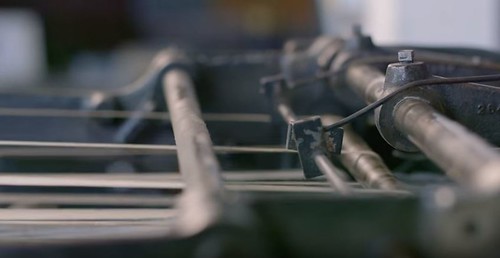

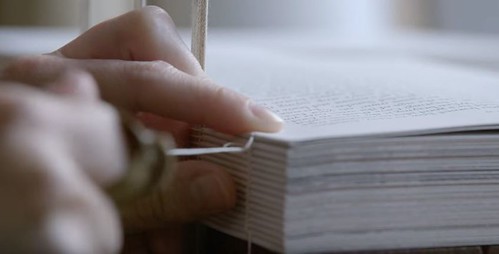
To view the complete video, see:
Raw Craft with Anthony Bourdain - Episode Five: Arion Press
(www.youtube.com/watch?v=i-5NhxYRqUI)

CHINA'S NEW 100-YUAN BANKNOTE
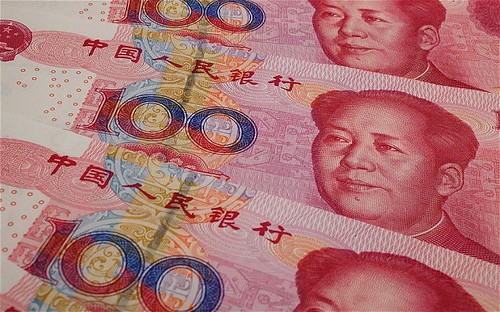
China's new 100-yuan banknote, acclaimed by authorities as bearing high-tech features that make it harder to forge, is being rejected by cash machines, according to reports.
The red note, emblazoned with a portrait of Communist China's founder Mao Zedong, is worth just over £10 and remains the highest denomination available in the country.
It went into circulation Thursday and has been dubbed the "high-roller gold" for the colour of its main "100".
It has more security features than previous notes, the government said, to make it "easier for machines to read" and "more convenient for the public to distinguish authentic notes from fake ones".
But some banks' automatic teller machines (ATMs) would not accept the new money when people tried to deposit it, reported the East Asia Economic and Trade News in the northeastern city of Changchun. A bank executive said it will take several days for all ATMs to be "upgraded" to recognise the new note, it said.
To read the complete article, see:
Cash
machines reject new 'high roller gold' Chinese banknotes
(www.telegraph.co.uk/finance/currency/11992761/Cash-machines-reject-new-high-roller-gold-Chinese-banknotes.html)
BUYERS COMPLAIN ABOUT "PURE GOLD" BANKNOTES
Leon Saryan writes
A numismatist friend in Lebanon (Hagop Kazazian, mentioned in this article) is trying to hold the Banque du Liban accountable for misleading the public about "gold" notes. These seem to be made of plastic with maybe a gold coating, and are coming out of China where they can be purchased for pennies.
Disgruntled customers said Wednesday that they had been duped by Lebanon’s Central Bank (BDL), claiming that collectible gold Lebanese pound bills they purchased were actually gold plated, and primarily made of plastic and nylon. “I understand from the certificate that the bill is made up of pure gold ... when in reality it is not,” Hagop Kazazian told The Daily Star.
The Central Bank has dismissed the allegations, arguing that customers simply misunderstood.
Kazazian is among a number of enthusiasts and collectors who purchased golden bills issued by BDL. The bills were marketed as souvenirs and issued in limited editions. Made of pure gold, according to an accompanying certificate, they were sold with an ornate box and display case. Prices ranged from LL225,000 to LL1 million. “The limited edition replica of the Lebanese pound note is created from a sheet of 99.99 percent pure gold,” read the certificate.
But collectors alleged that the bill was composed of a gold-plated nylon sheet. “We were manipulated,” a collector told The Daily Star.
Enthusiasts queued for long hours in order to purchase the bills, but many were disappointed with its quality. They contended that when crumpled even slightly, the bills lose their golden luster, and when burnt with a lighter, the coating melts away to reveal nylon underneath. Collectors said that if the bills were made of pure gold, as the certificate claimed, the layer would neither fade nor melt.
“Scientifically speaking, if the bill was made of pure gold and maintained the thickness of the original note, it would be much heavier than the one we purchased,” a paper manufacturing professional and collector told The Daily Star.
“I do not hold any grudges but I do think we have been misled,” he said. “Rather than write ‘created from a sheet of 99.99 percent pure gold,’ they should have written ‘covered by a sheet of 99.99 percent pure gold,’ then we would know how to act.”
In response to the allegations, BDL released a statement of clarification insisting that the bill was made of gold and rejecting the methods used to test its authenticity. The bank contended that the only way to verify the authenticity of the gold was in a laboratory, utilizing energy dispersive X-ray techniques.
The statement asserted that as a souvenir, the price of the bill did not reflect the actual value of the gold it contained, and reminded collectors that the bank would release more bills in the future. BDL also claimed that the bills were not sold for profit, but rather to preserve and celebrate Lebanese history.
“We never said what the actual quantity of the gold is ... just that the sheet is 99.99 percent gold,” a BDL employee told The Daily Star. He scoffed at the notion of using a burn test to determine the bill’s composition. “Of course it will burn and crumple ... look how thin it is.”
The employee reiterated that the bills were sold as souvenirs and not for profit. “Look, we are a bank that grosses between $900 million and $1 billion in profit each year ... Why would we compromise that for some measly golden bills?”
I just looked around and I found a pirate treasure "medal" in my collection that is labeled "999 PURE GOLD" on one side and "CHINA" on the other. At best, it's made of plastic with a gold colored surface. So why is anyone surprised?
To read the complete article, see:
BDL under
spotlight after ‘gold bill’ fraud claims
(www.dailystar.com.lb/News/Lebanon-News/2015/Nov-05/321695-bdl-under-spotlight-after-gold-bill-fraud-claims.ashx)
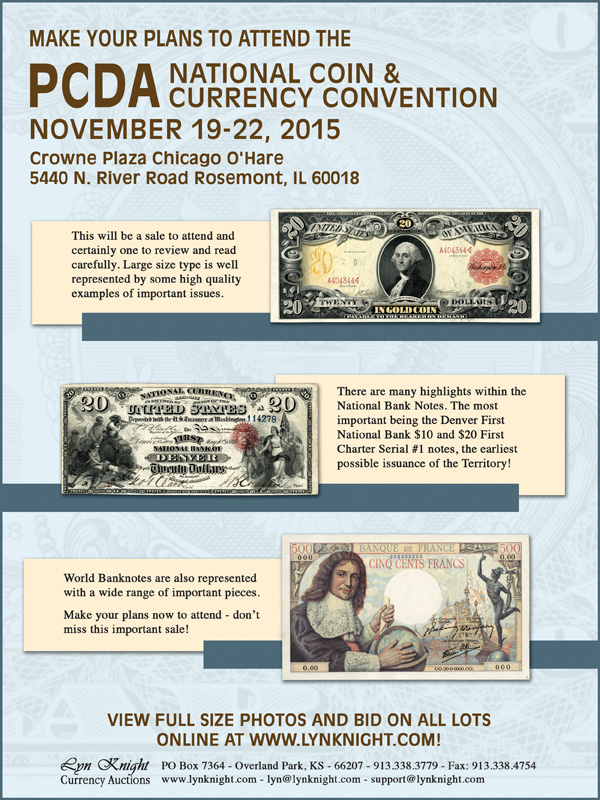
SELECTIONS FROM BALDWIN'S: NOVEMBER 15, 2015
Ceylon Black Vulcanite Token
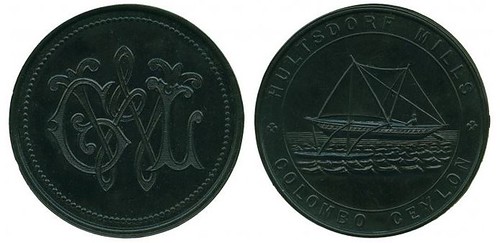
Ceylon, G & W Leechman, Hultsdorf Mills, Colombo, black vulcanite token 25 Cents, ND (1872), monogram, rev catamaran at sea (Pr. 64)
For more information, or to purchase, see:
Ceylon Black Vulcanite Token
(www.baldwin.co.uk/ceylon-black-vulcanite-token.html)
Australia, William A. Jarvey Pawnbroker Token
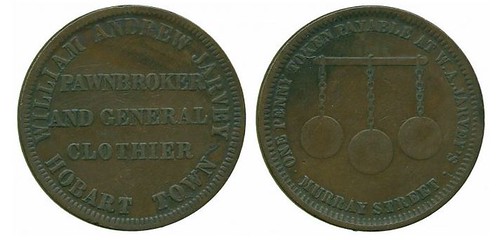
Australia, William A. Jarvey, Hobart, Murray Street, copper Penny token, ND (A. 301; KM. Tn137.2
For more information, or to purchase, see:
Australia, William A. Jarvey, Hobart
(www.baldwin.co.uk/australia-william-a-jarvey-hobart.html)
Queen Anne’s Bounty Medal, 1704
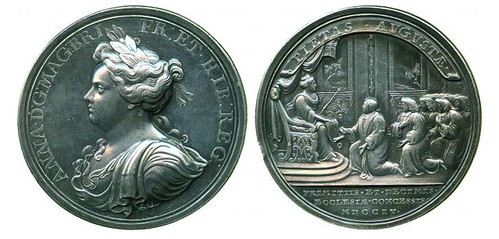
Anne (1702-1712), Queen Anne’s Bounty 1704, Silver Medal by J Croker, bust left, ANNA. D: G: MAG :BRI: FR: ET. HIB: REG. rev Anne presents her charter to kneeling members of the clergy, PIETAS AVGVSTA, in exergue PRIMITIIS etc., 44mm (Eimer 404; MI ii 251/43).
For more information, or to purchase, see:
Queen Anne’s Bounty, 1704
(www.baldwin.co.uk/queen-anne-s-bounty-1704-9063.html)
Japan: Yoshihito and Sadako Marriage Medal
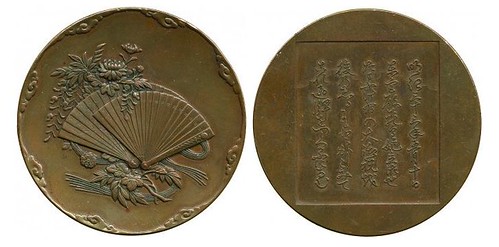
Japan, Marriage of the Crown Prince Yoshihito [the future Emperor Taisho] and Sadako Kujo [the future Empress Teimei], 1900, Bronze Medal, unsigned, two decorated fans, rev legend in five vertical lines, 54mm
For more information, or to purchase, see:
Marriage Yoshihito and Sadako
(www.baldwin.co.uk/marriage-yoshihito-and-sadako.html)
George Prince of Wales Medal, 1792
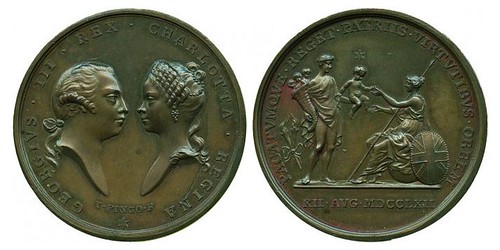
George III, George Prince of Wales, 1792, Copper Medal by T Pingo, facing busts of George and Charlotte, rev female figure hands infant child to Britannia, PACATUMQUE REGET PATRIIS VITUTIBUS ORBEM, in exergue, XII AUG. MDCCLXII, 40mm (BHM 77)
For more information, or to purchase, see:
George Prince of Wales, 1792
(www.baldwin.co.uk/george-prince-of-wales-1792.html)
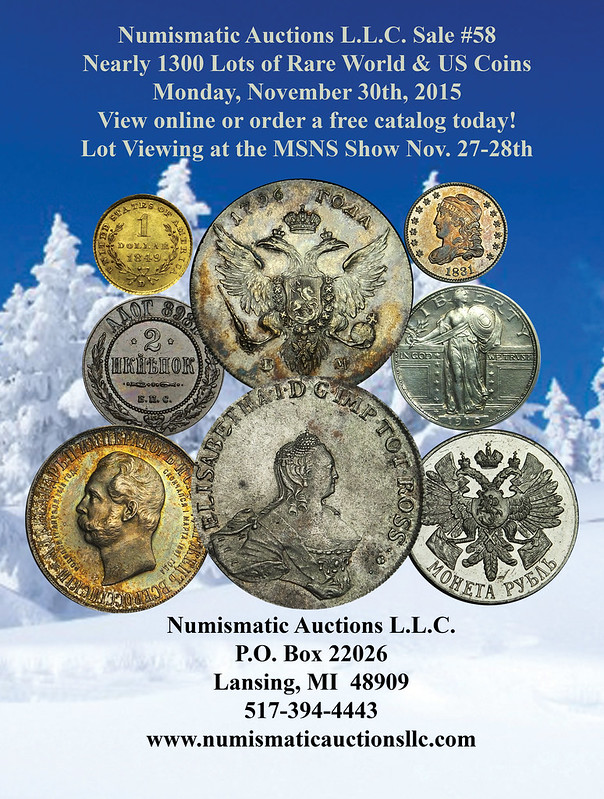
AUSTRIA'S 2016 NEW YEAR'S COIN
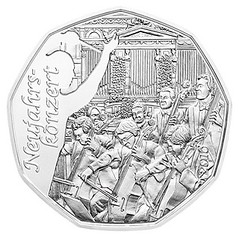
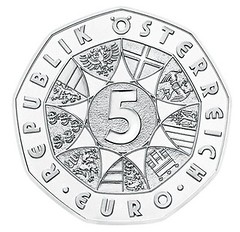
On December 2, the Austrian Mint will release its annual New Year’s coin. This year, the design celebrates the New Year’s concert performed yearly by the Vienna Philharmonic.
The reverse was designed and engraved by Herbert Waehner and features cellists and bassists performing before the silhouette of a conductor in action. The background is filled by a pipe organ decorated with flowers, as is customary for the annual New Year’s concert.
A press release notes that Mint engravers found this design difficult to execute; they struggled to include important details from the concert hall while keeping the image fairly simple. Waehner’s creative use of perspective solved this dilemma, allowing him to preserve disparate features–the hall, the musicians, the holiday decorations–of this dynamic scene. The empty outline of the conductor is especially apt since the Philharmonic invites a different conductor each year to front the orchestra for this occasion. Inscribed inside this silhouette is NEUJAHRS-KONZERT, German for “New Year’s concert.”
The obverse was designed by Helmut Andexlinger. At the center of the coin is the number 5, indicating the five-euro denomination of the issue. Surrounding this feature are nine shields that represent the nine federal provinces of Austria. Inscribed along the rim of the design is REPUBLIK ÖSTERREICH and EURO.
To read the complete article, see:
Austria to Release 2016
New Year’s Coin Featuring Vienna Philharmonic
(http://world.mintnewsblog.com/2015/11/austria-releases-2016-new-years-coin-featuring-vienna-philharmonic/)
NUIE'S NEW VESUVIUS VOLCANO 'COIN'
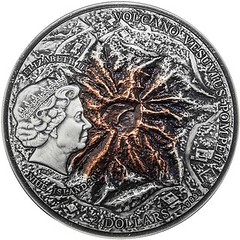
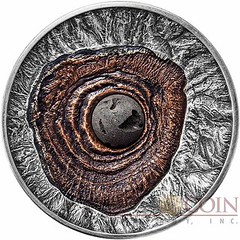
The new coin features Mount Vesuvius in Pompeii, Italy, and includes an inlay containing actual lava from Mount Vesuvius. The coin is struck in ultra high relief (8 mm.) and has a mintage limit of only 688 pieces.
The obverse of the coin features a portrait of Queen Elizabeth II and the inscriptions ELIZABETH II, VOLCANO VESUVIUS – POMPEII, 2 DOLLARS, Ag 999, and NIUE ISLAND, the country of issue. The center of the design features a convex, high relief rendering of Mount Vesuvius mid-eruption, with red lava making its way to toward the surrounding city of Pompeii.
The coin’s concave reverse resembled the open mouth of the volcano, with an authentic lava inlay placed at the center. The 2-ounce coin measures a considerable 50 mm in diameter.
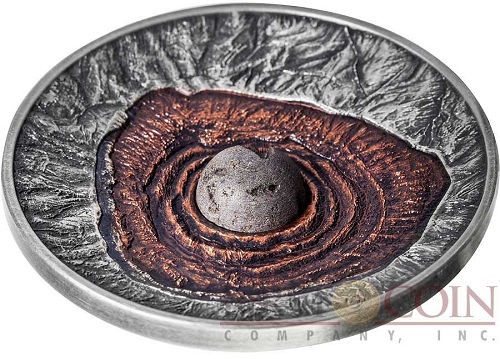
To read the complete article, see:
Mint of Poland Issues Volcano Coin
With Real Lava from Mt. Vesuvius (http://news.coinupdate.com/mint-of-poland-issues-volcano-coin-with-real-lava-from-mt-vesuvius/)
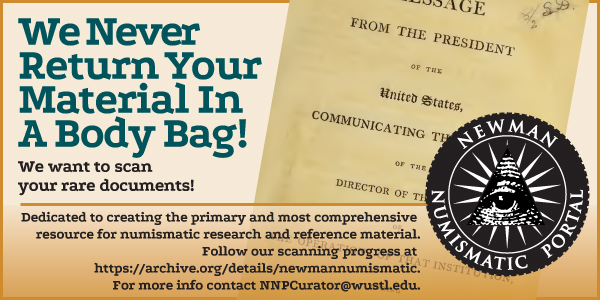
WARTIME LOVE TOKEN INTERVIEW WITH CAROL BASTABLE
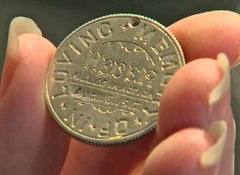 On this Veterans Day, it’s important to remember that during World War II; most of our servicemen were young. They were right out of high
school with mothers and loved ones waiting for their return. So the soldiers used whatever they could find to make gifts to send home.
On this Veterans Day, it’s important to remember that during World War II; most of our servicemen were young. They were right out of high
school with mothers and loved ones waiting for their return. So the soldiers used whatever they could find to make gifts to send home.
Many created ‘love tokens.’ These are coins that the soldiers made into gifts. During their downtime, the soldiers would sand down the coins and carve messages for their loved ones.
Carol Bastable has spent years collecting these love tokens. She said, “It’s mostly messages of love to mothers at home, sisters, girlfriends, wives, and it was a time in this country that had one of the largest patriotic outpourings in support of soldiers at home.”
They would even creatively cut the coins apart and fashion them into lockets with photos inside. Bastable said, “The ones with the soldiers in the photos touch a chord with you because it puts a face on war.”
These servicemen were very creative. She added, “You have to remember that where they are there’s not access to a jewelry store and tools.”
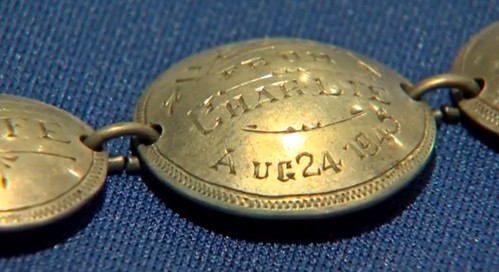
Each one of these trinkets tells a story. One was made by a soldier during WWI. It was inscribed with the message: ‘August 16, 1917. ‘Loving memory, Heber, Killed in Action.’
Another had the message: ‘To my darling Alma, from Mannie. England 1943.’
Bastable said, “They were in the hands of these soldiers, they were mailed home to the loved ones that cared for them and supported them and its history in your hands.”
Not all of the token were sentimental. The soldiers would have fun with it too. One coin was carved to look like a soldier that’s smoking. Others would carve unique pictures or engrave faces onto the coin.
Some of these tokens date back to the Spanish-American war.
Bastable is part of a group called the love token society. It’s made up of coin collectors who collect these unique historical items. The group is actively searching for any World War II veterans who are familiar with these tokens, to see if they can shed more light on their stories and on how they were made.
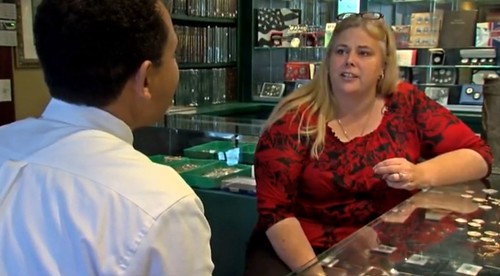
Carol adds:
Sometimes it is just about making contacts with the right people to get numismatics out there into mainstream press. I always knew that these would make a good news story because they go far beyond our world of numismatics, with an appeal to those who served in the military, families of servicemen, and also military historical buffs.
These coins are also featured on my Pinterest boards and the Love Token Society website. The reporter solicited for people to contact us if they have first-hand accounts of these being made. I mentioned it in the interview but of course an hour of filming gets severely cut down to fit the short news segment. I was glad he mentioned it at the end of his report.
I have been trying to research these for years and so far only have two firsthand accounts (interviews with living veterans). I also have a lot of hearsay and stories passed down without personally seeing firsthand documentation from the veterans themselves. The clock is quickly ticking down on being able to find living WW II veterans and I hope this press will provide some more input on the history.
I plan to exhibit the collection at FUN but that is probably five years off or so...once the show is back in Orlando. Originally I had plans to contact the press there once it was on display because I believe it is the largest known collection of WW II coin art (artistically altered coins, mainly engraved love token style). It will probably have to be shown as a non-competitive exhibit due to the seven case limit in the competitive exhibits.
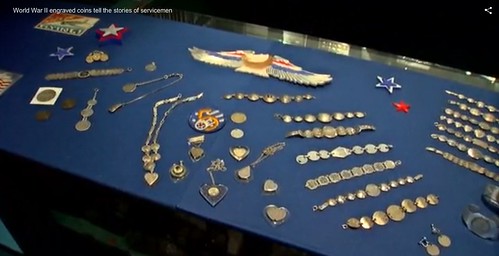
To read the complete article, see:
Engraved coins shed light on personal
lives of WWII soldiers (http://wfla.com/2015/11/11/engraved-coins-shed-light-on-personal-lives-of-wwii-soldiers/)

TREASURE HUNTER SEEKS SUNKEN BRITISH SHIP OFF URUGUAY
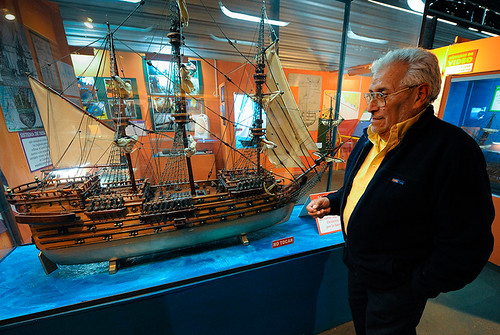
Treasure hunter Ruben Collado with model of the Lord Clive
More than 250 years after Spanish forces sank the British warship Lord Clive off the coast of Uruguay, treasure hunter Ruben Collado is working to raise it from its watery grave.
Collado believes the ship may have been carrying 100,000 gold coins when Spanish cannon fire sank it in 1763, as Britain and Portugal tried to seize the city of Colonia del Sacramento during the Seven Years' War.
The Argentine adventurer spent 14 years searching for the wreckage before finding it by accident in 2004, when the propeller of his boat struck a sunken mast as he trolled around the River Plate estuary.
After waiting more than 10 long years for authorization from the Uruguayan authorities, Collado is finally set to fulfill his dream: to haul what is left of the wreckage to the surface, repair its cracks and bring it to shore.
The 78-year-old bursts with energy as he discusses his plans, brushing aside conservationists' calls to leave the ship where it is and skeptics' doubts about its cargo.
"I'm a professional treasure hunter. If the ship doesn't have any treasure, investors don't put up any money," he told AFP, his eyes alight as he looked out over the water from a bar in Colonia del Sacramento.
Pencil in hand, Collado sketches out a map to show where the 64-gun privateer lies, with a cargo he says also includes thousands of liters of rum, 18th-century weaponry and other vestiges of an era when Europe's colonial powers were battling each other around the world.
Collado, who has done extensive research on the ship and its cargo, says its fatal error that January 6 was casting anchor too close to shore.
The Lord Clive, which belonged to the British East India Company, was sailing at the head of a fleet of 11 ships.
Collado believes its mission was to drop arms and equipment ashore to supply an uprising against the Spanish crown across a vast swath of South America, in hopes of winning control over the region's commerce.
"The ship had incredible firepower," he said. "It's a fabulous historical treasure for research on period weaponry."
But despite its three storeys of cannon, the Lord Clive anchored just 350 meters (380 yards) offshore -- making it an easy target for the Spanish, and putting it too close for its own guns, which fired over the city.
"They kept lowering the cannon, but they couldn't hit the city because Colonia sits so low," said Collado.
"The Spanish hit them and hit them, until the ship started to sink."
He estimates his haul will total hundreds of millions of dollars -- half of which will go to the Uruguayan government.
It will take two years to clear the rocks and mud covering the ship, run a huge metal lattice under it, raise it, patch it up and bring it to shore.
To read the complete article, see:
Treasure
hunter Ruben Collado seeks gold in sunken British ship off the coast of Uruguay
(http://artdaily.com/news/82920/Treasure-hunter-Ruben-Collado--seeks-gold-in-sunken-British-ship-off-the-coast-of-Uruguay#.VkizlXbnthE)
FEATURED WEB SITE: WORLD COIN COLLECTION
This week's Featured Web Site by Dema Yuriy is an online catalog of a collection of world coins from over 280 countries. The site focuses on coins of the 20th and 21st centuries, organized by the Krause Standard Catalog World Coins. It is based in Ukraine and appears to be in Russian, so I'm relying on a Google translation. The images are good quality, so take a browse. Thanks to Bob Johnson's COINSHEET for the link.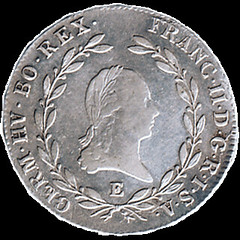
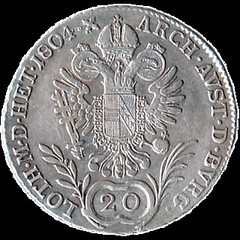
dema.com.ua

